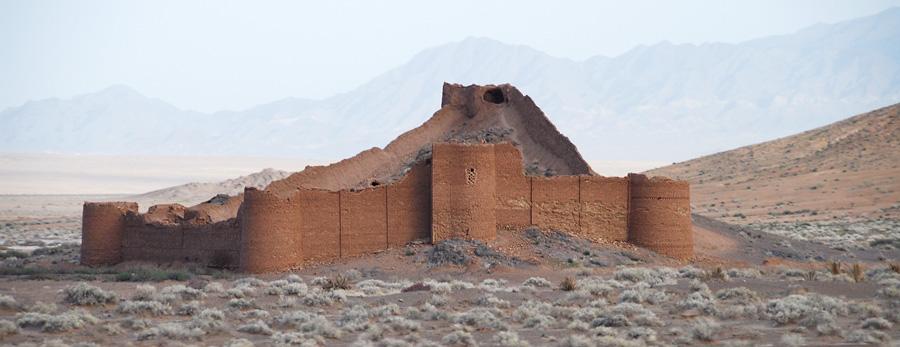
This is the second post in my 3-post series about Iran. My first visit to Iran was in March 2007 when I visited Tehran and then travelled south to Esfahan, Shiraz and the desert around the town of Yazd. It was an unforgettable trip and I couldn’t wait to return. In February 2013 I flew back to Tehran and then took Mahan Airlines southeast to the town of Kerman where my Iranian friends awaited my arrival. I then explored the south and then up to the northwest.
Start reading this 3-post story in the Northwestern Region, then the Central Region (this post), and then the Southern Region.

Go to ~ Northwestern Region
Central Region (You are here)
Go to ~ Southern Region
Kashan
Just 250 km south of Tehran, the Iranian capital, and nestled in the heart of the central Iranian plateau, historic Kashan offers a tantalising glimpse into this ancient civilisation. The city was an important production centre for high-quality pottery and tiles between the 12th and 14th centuries and also a stopover for caravans along the ancient Silk Road between China’s Shanxi Province and Rome.
But wait, I have a separate blog post on this incredible city. Check out Kashan: A Desert City with a Rich Cultural Heritage

Read all about Kashan in a separate blogpost
Kashan: A Desert City with a Rich Cultural Heritage
Abyaneh
About 80 km south of Kashan, passing right next to the controversial uranium enrichment facility at Natanz, the road leads to the village of Abyaneh. Abyaneh lies at the foot of the spectacular Karkas Mountains in Natanz County of Isfahan Province.
The village has a rich history dating back to the Sassanid Empire (224 to 651 AD), although its golden age was during the Safavid dynasty (1501 to 1736), so many facades date from that period.
The village is known for the peculiar reddish hue of the adobe buildings (natural building material made with sand, clay, water, and some kind of fibrous or organic material).

Situated on high ground along a small stream (its name is derived from the word “viona” meaning willow grove) the village is partly surrounded by a Sassanid-era fort and the Castle of Haman.
The dilapidated remains of a Sassanid-era fortress can still be seen on the hills above. The oldest building in the village is the Harpak Zoroastrian Fire Temple, built during the Achaemenid period (550-330 BC).
Another fortress, the 200-year-old Palahamoona (Takht-e-Haman), is located on a hill to the southwest of the settlement, across the Barzrud River.
Abyaneh is an iconic destination with its distinctive red hues and stepped layout of traditional multi-storey houses.
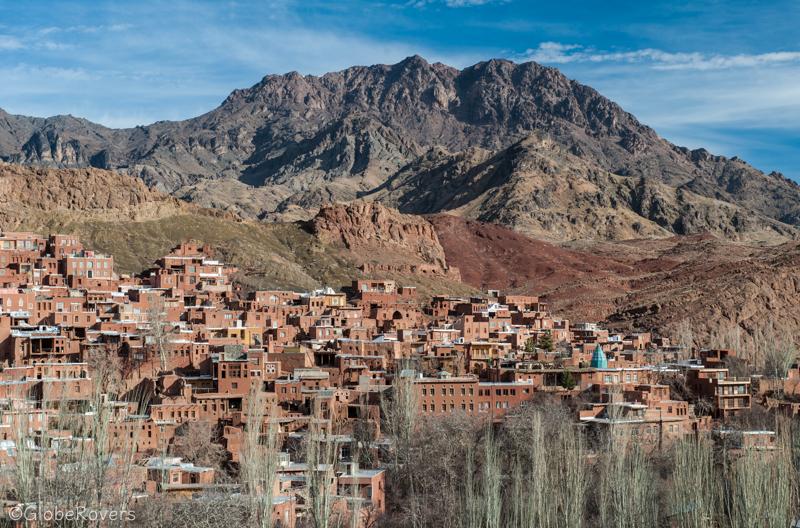
Similar to the village of Masouleh in north-western Iran, the terraced arrangement down the slope of the hill means that the roof of the lower house is also the courtyard for the house above.
Most of these adobe houses have two or three floors built with mud bricks, while straw and timber were used for the roofs.
Another prominent feature of most of the houses is their protruding wooden balconies that overlook the steep, narrow alleyways. Unfortunately, many of the houses are badly in need of renovation and some balconies seem to cling precariously to the walls.

Wooden lattice windows of varying sizes, with their small, diamond-shaped glass panes arranged in a frame of narrow metal strips, give each house a distinctive look. Many wooden window panes are carved with exquisite geometric patterns and floral motifs.
One of the most striking features of many houses is the main entrance door, adorned with beautiful carvings containing Quranic verses or poems, and sometimes even including the names of the owners and the stonemason.
An unusual feature of the entrance doors is a pair of male and female door knockers. An elongated knocker is for male visitors, while a round knocker is exclusively for female visitors. These knockers make distinct sounds, so a male occupant will answer the door if the caller is male and vice versa. If a man knocks on the door and there is no man in the house to answer, the female resident can cover herself with her hijab before opening the door.
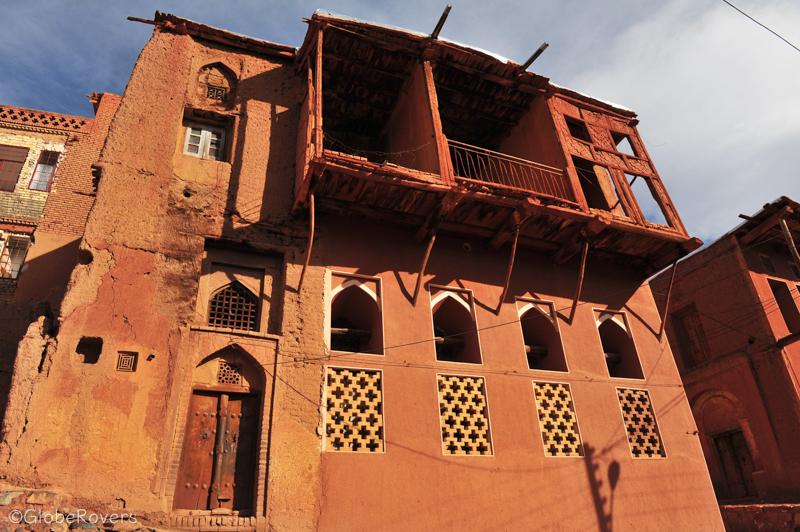
Abyaneh is also popular with visitors because its culture has been largely preserved over the years. The residents, about 300 people living in about 160 families, most of whom are elderly, still wear their distinctive traditional clothes. The language spoken by the residents is called Parthian Pahlavi.
The people are very conservative and have maintained their traditional costumes with the women typically wearing a white long scarf with a colourful pattern.
It is said that no matter how educated a person from Abyaneh may be, he or she will still put on traditional Abyaneh clothing when returning to the village from elsewhere in Iran.
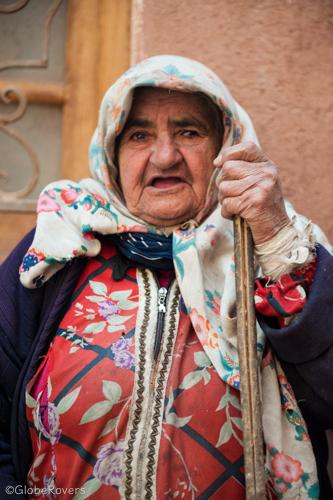
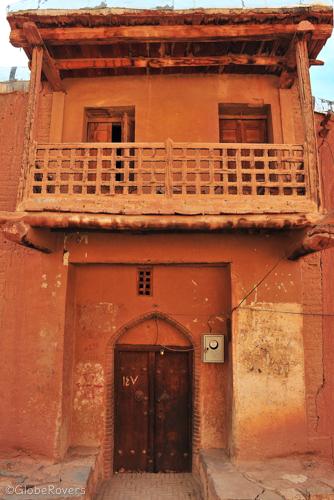
Besides the fortresses and fire temple, don’t miss the impressive Jame Mosque, Anthropology Museum, and Zeyaratgah Shrine with its large decorative pool and veranda.
Abyaneh is about 2,225 metres (7,300 ft) above sea level, so winters are cold. The best time to visit is in spring and autumn. The village is best reached either from Kashan in the north or from Isfahan further south. A private car with a driver is most convenient as public transport is limited.
Esfahan
About 440 km south of Tehran is one of the greatest cities in the Middle East. Esfahan (or Isfahan), with a population of more than 3.5 million people, is probably Iran’s highlight for most local and international visitors.
The city is known for its good shopping (in particular copperware and Persian carpets in the Esfahan Bazaar at the northern section of the prominent Naqsh-e Jahan Square), the ancient bridges across the Zayande River, and the many mosques, palaces, caravanserais, old theological schools (madresse), churches and cathedrals, squares and streets, and other historical buildings. Out of town are many other places of interest to explore.
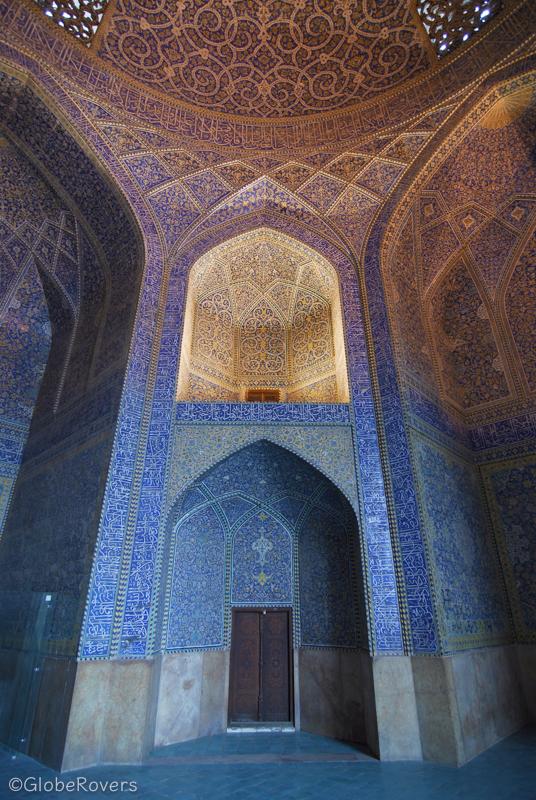

This is a city where you can spend days on end and not truly experience it all. One of the greatest places to relax is at the Naqsh-e Jahan Square and along the bridges where locals will come up to you to enquire about your life. Don’t be surprised with their first questions which almost always include: “Are you married?” and “What is your job?” Seems like these two questions are essential for them to detect your social standing. Relax, they are only interested in your life.
The Khaju Bridge is arguably the finest bridge in Esfahan. It was built by the Persian Safavid dynasty king, Shāh ‘Abbās II, around 1650 on the foundations of an older bridge. It has 23 arches, a total length of 105 m, and is 14 m wide.
Another lovely bridge, the Chubi, was also built by king Shāh ‘Abbās II around 1655 to help irrigate the nearby palace gardens. It has 21 arches and has a total length of 150 m.
The much older Si-o-Seh Pol Bridge was built by the Safavid dynasty king, Shāh ‘Abbās I, between 1599 and 1602. It has two rows of 33 arches, has a total length of 300 m, and is 14 m wide. The name Si-o-Seh Pol means “the bridge of 33 arches”.
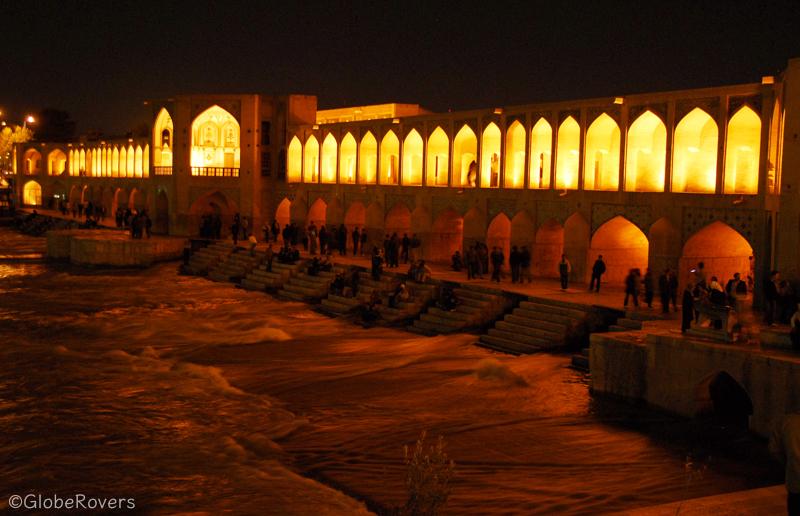
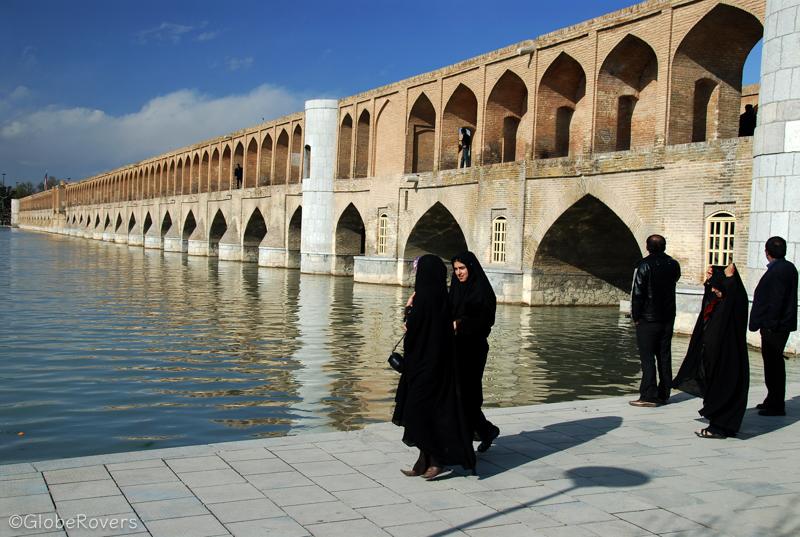
Sheikh Lotfollah Mosque on the eastern side of Naqsh-e Jahan Square (known as Imam Square or Meidan Emam) was built between 1603 and 1618 during the reign of Shāh ‘Abbās I. It is known for its beautiful interior wall and ceilings decorated with blue, yellow, turquoise and white tiles with intricate arabesque patterns. The inscriptions on the dome were written by Ali Reza Abbasi, a famous Iranian calligrapher.
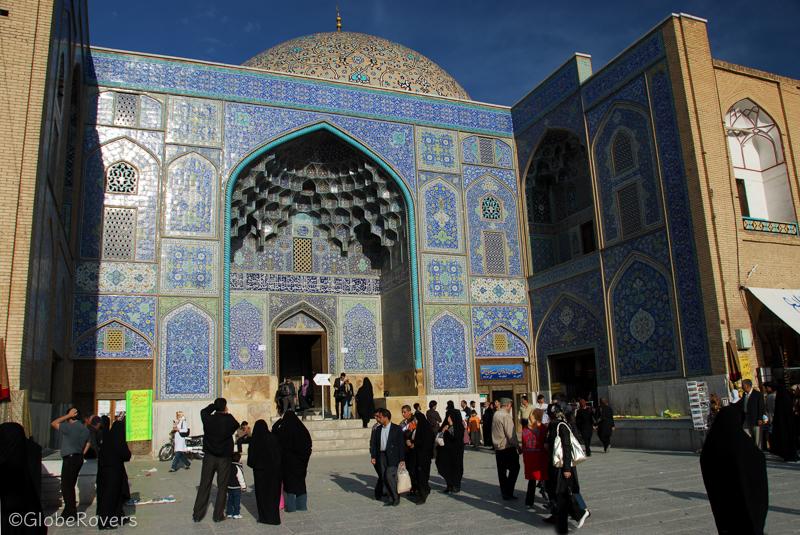
The nearby Imam Mosque was also built by Shāh ‘Abbās I between 1611 and 1629. It is known for its seven-colour mosaic tiles and complex calligraphic inscriptions. As one of the oldest mosques still standing in Iran today, the grand congregational Jāmeh Mosque went through several phases of construction and re-constructions starting around the year 770 until as recent as the end of the 20th century. The muqarnas (decorative corbels) added during the Safavid era are amongst the most beautiful in Islamic architecture.
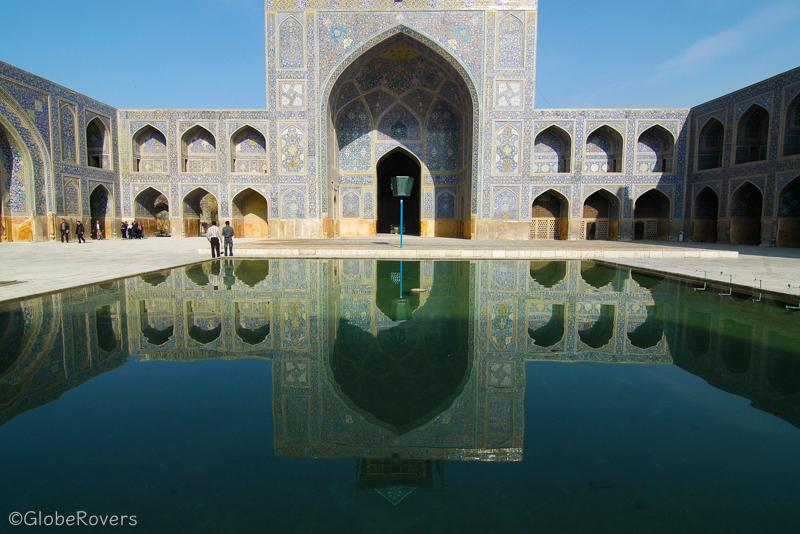
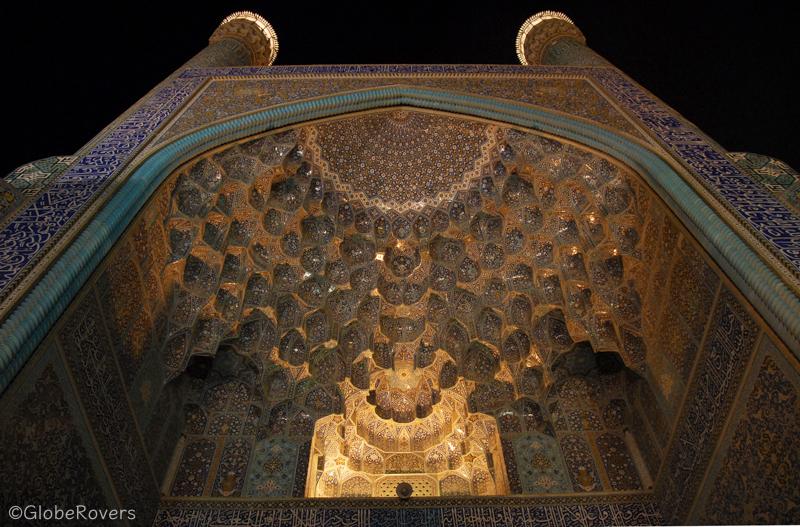
Another beautiful building in Esfahan is the Safavid dynasty palace of Chehel Sotoon which was largely completed under Shāh ‘Abbās II. Construction started around 1598. It has 20 slender wooden columns laid out in three rows of six with two additional ones on either side of the main entrance.
Some of the remaining frescoes and paintings on ceramic inside the Chehel Sotoon Palace are depicting important scenes in Esfahan from the 16th and 17th centuries. Sadly many of the ceramic panels are in the possession of major museums in Western countries.
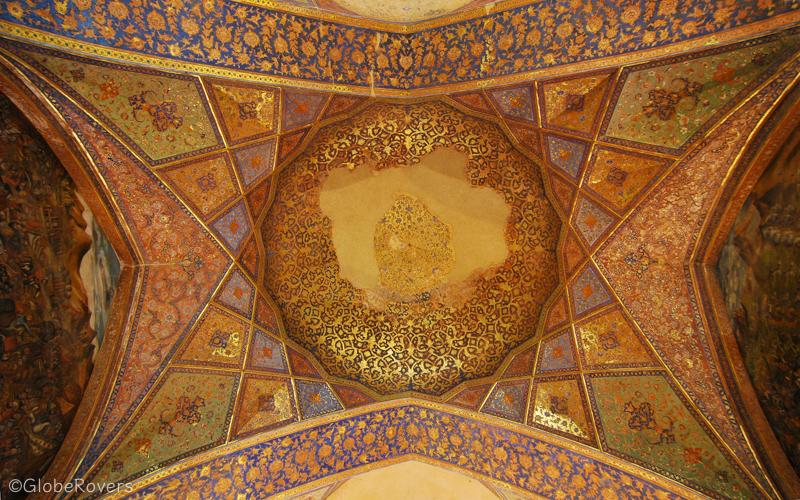
The Hasht Behesht Palace (‘Eight Paradises’ of Islam) is a residence built in 1669 by Shah Sulaiman, and is one of more than forty large mansions constructed in Esfahan during the Safavid era. The “Hasht Behesht” architecture refers to the specific floorplan common in Persian architecture whereby the plan is divided into an octagonal layout of rooms surrounding a large central room.
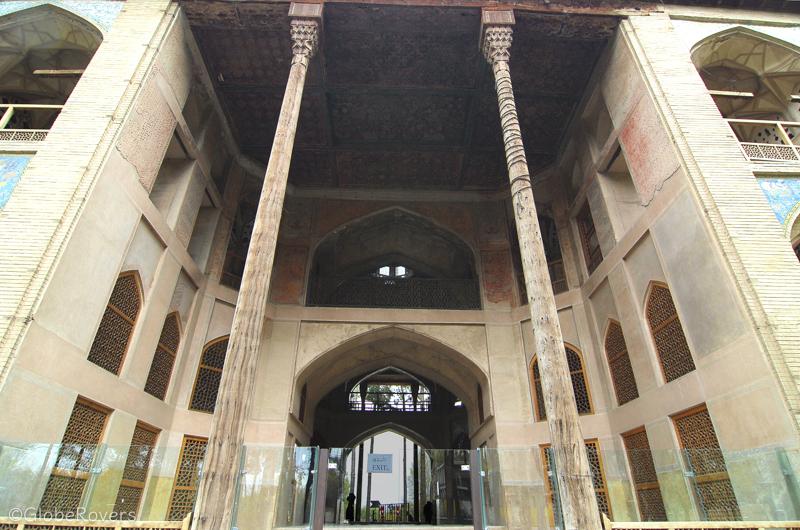
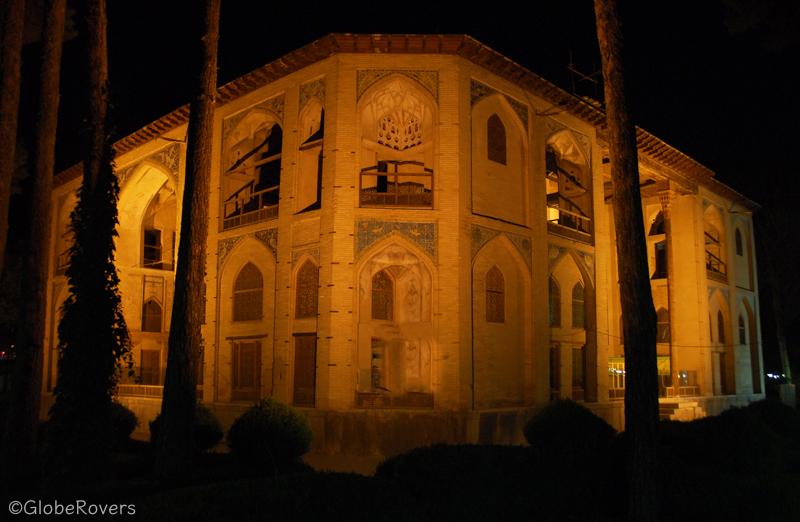
The grand palace of Ālī Qāpū was built by decree of Shah Abbas I in the early seventeenth century and is located on the western side of the Naqsh-e Jahan Square opposite the Sheikh Lotfallah mosque. It is 48 m high and has seven floors which were constructed over a period of 70 years.
Don’t leave Esfahan before shopping at the famous Esfahan Bazar. Stock up on some blue-enamel mina-kari artwork at the Bazar-e Honar (Gold and Silver Bazaar). Mina-kari is one of Esfahan’s most famous artworks which is enamel works of decorating metals with colourful baked paintings. “Mina” means a glasslike coloured coating which is baked on metals such as copper. While commonly used on plates, mina-kari is also applied to other dishes, vases, boxes and frames.

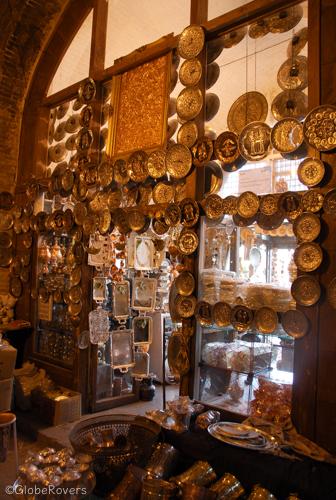
Hungry? In Esfahan try the huge meatballs as well as the Beryooni which is a dish made of baked mutton and lungs.
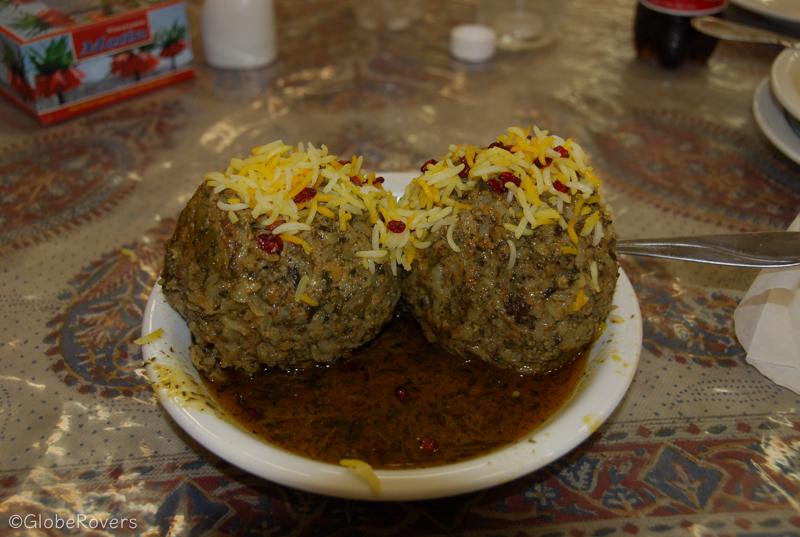
Shiraz
Shiraz, with a population of over 1.5 million people, lies about 400 km south of Esfahan and is not connected by train. The city has been a regional trade centre for over a thousand years and is also one of the oldest cities in the history of Persia.
Shiraz is celebrated for its now defunct Shirazi wine which was historically (since the 9th century) produced around the city of Shiraz in Persia. As the current government has formally banned all alcoholic beverages, grapes are still grown around the city of Shiraz but not, formally at least, fermented into wine.
The earliest reference to the city of Shiraz (then called “Tiraziš”) is on Elamite clay tablets found in 1970.
Other than wine, Shiraz is also known as the city of rose gardens, nightingales and poets. Two of Iran’s greatest ancient national poets, Hafez and Saadi, lay buried here. The well-maintained gardens at the mausoleum of Hafez have orange trees, paths, streams, and beautiful flower beds.
Saadi Shirazi (Abū-Muhammad Muslih al-Dīn bin Abdallāh Shīrāzī, born in 1184 and died in 1283) was one of the major Persian poets of the medieval period and is known for the depth of his social and moral thoughts.
Families come here to relax and enjoy the peaceful surroundings. A teahouse on the grounds provides refreshments in a traditional Iranian setting.
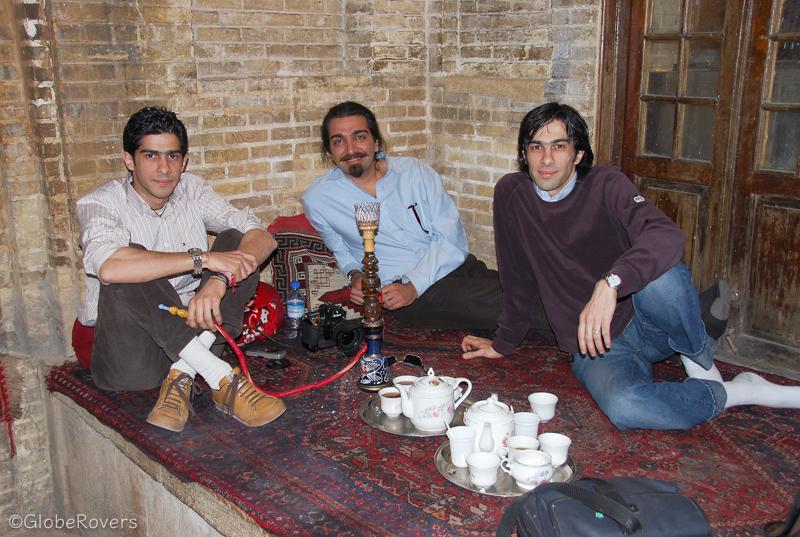
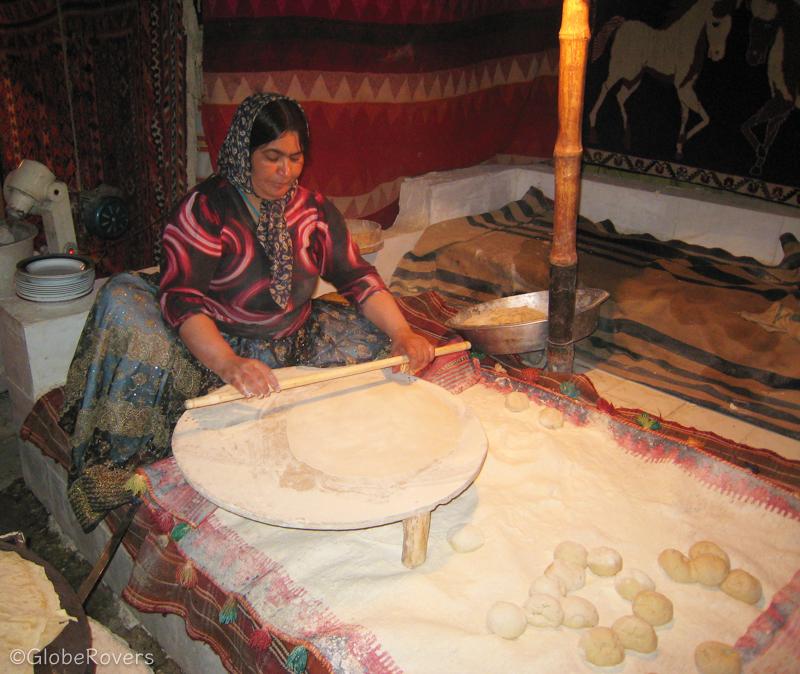
Shiraz is home to the mausoleum of Shah-e Cheragh (the shrine of the lord of the light, or “King of the Light”) which houses the tombs of the brothers Sayyed Ahmad and Muhammad, sons of Mūsá ibn Ja‘far al-Kādhim the seventh (of twelve) Emams. Their tombs became a pilgrimage shrine in the 14th century and is now the most venerated pilgrimage destination in Iran after the shrines of Imam Reza in the northeastern town of Mashhad and Fatima in the town of Qom just south of Tehran.
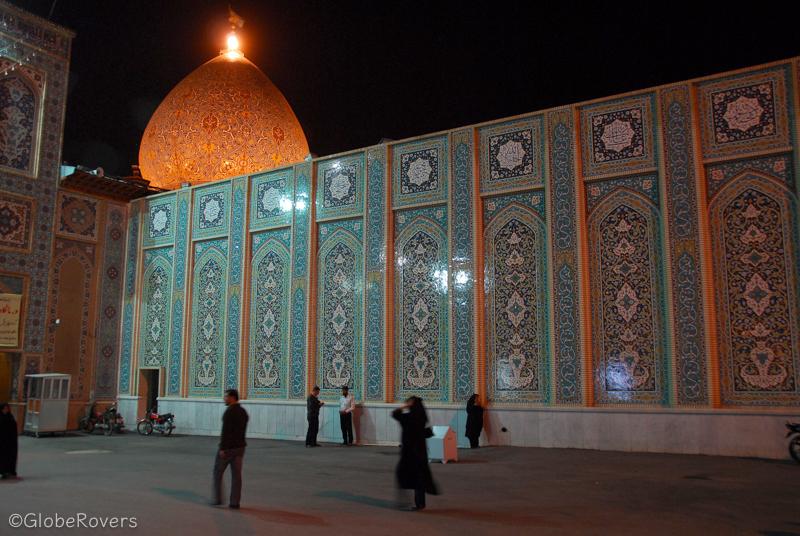
Shiraz also has some of the most impressive mosques such as the Atigh Jame Mosque, Vakil Mosque, and the Nasir al-Mulk Mosque.
A famous landmark is Arg-e Karim Khani (fort Karim Khani), a citadel which is impressive during the day and night. Arg-e Karim Khani is located in the northeast of town. It was built in 1766-7 to serve as a safe home for Karim Khan Zand, the Kurdish hero, during the Zandieh dynasty that ruled southern and central Iran in the 18th century.
As it resembles a medieval fortress, it was also used as a prison at which time all the valuable wall paintings were plastered over! It has four 12 m high walls connected by four 14 m round brick towers at a 90-degree angle. These outer walls are 3 m thick at the base and 2.8 m at the top, which made it a super safe home for Karim!
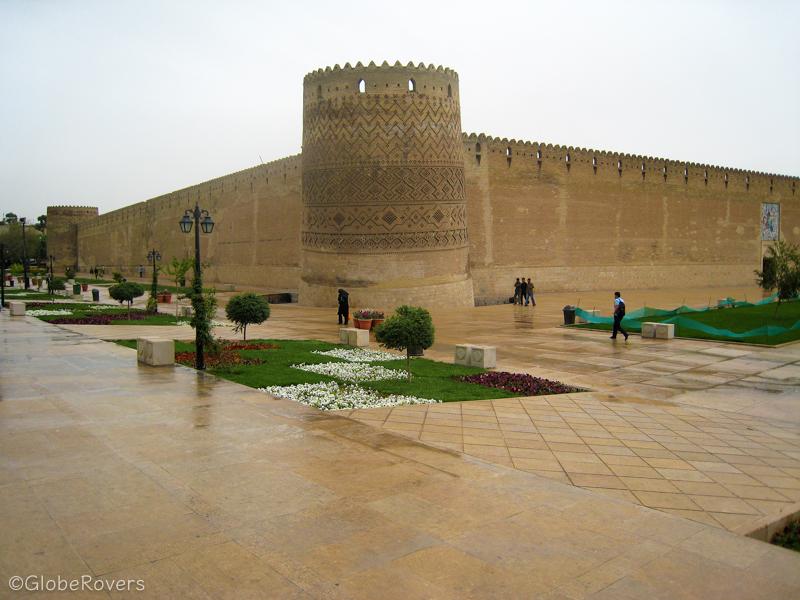

Qavam House (also referred to as the Eram Palace or Narenjestan e-Ghavam) is a private palace built for the wealthy Qavam family between 1879 and 1886. The garden is home to impressive cypress trees with some dating back 300 years.
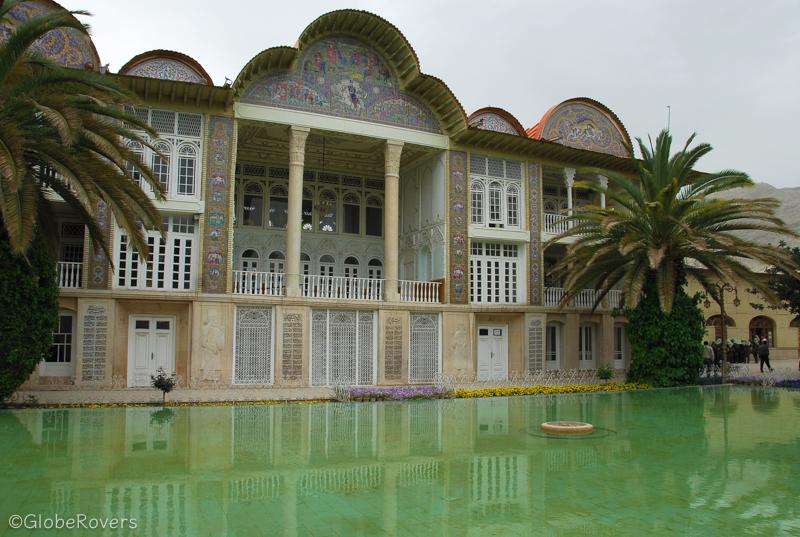
Shiraz’s Qur’an Gate is located at the northeastern entrance of the city. The Gate was first built in the first century during the reign of Adud ad-Dawla, then partly destroyed and neglected, and then rebuilt in the 18th century during the Zandieh dynasty. Earthquakes severely damaged it during the Qajar dynasty (1785 to 1925).
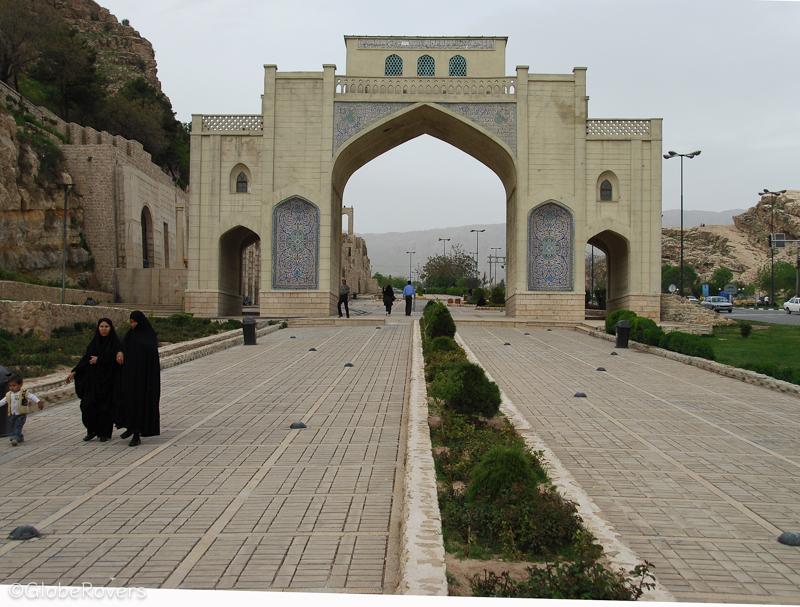
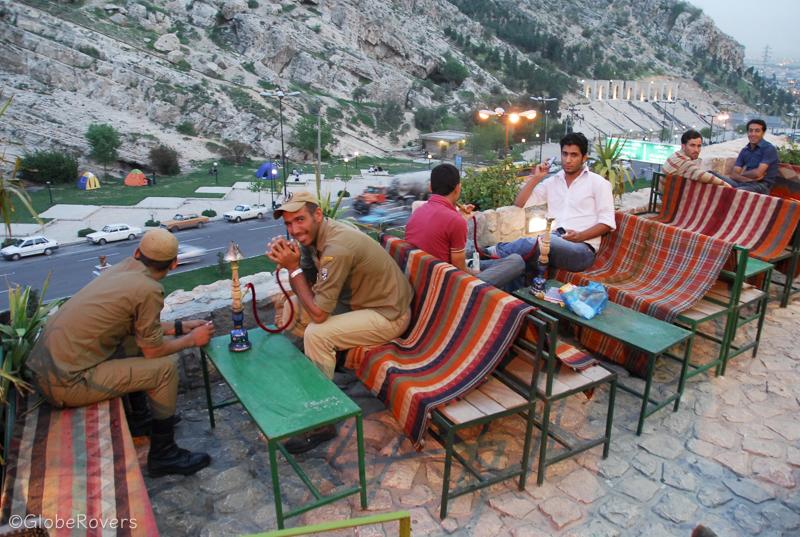
The Qashqai People of Fars
While in Shiraz, take a day-trip south towards the town of Firuzabad which is about 115 km south of Shiraz. With a population of about 62,000 people, Firuzabad is known for being surrounded by a mud wall and ditch. However, of more interest to some visitors is the amazing Qashqai nomadic people who live in the fields around town.
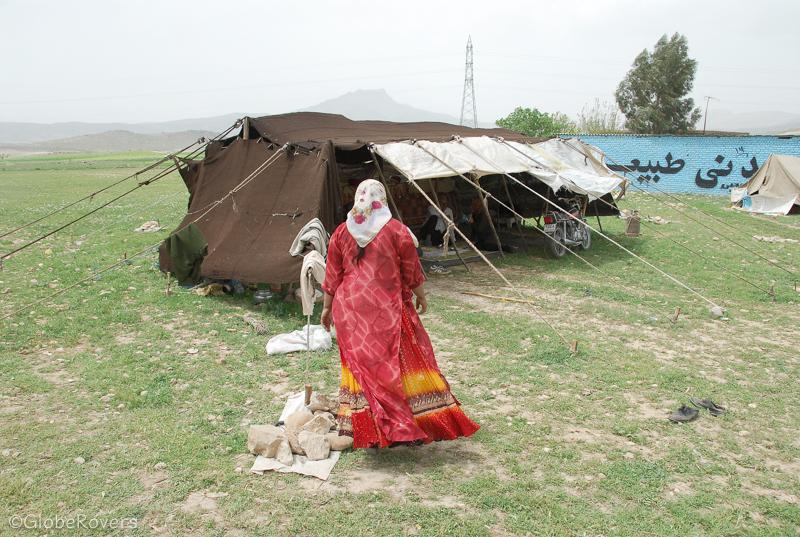
The Qashqai people (also spelled as Ghashghai and other variants) are a semi-nomadic tribal confederation mostly of Turkic origin. They are not a homogenous cultural group but rather consist of several tribes and sub-tribes including the Amalaeh, Darreh-Shuri, Kashkuli, Shesh, Baluki, Farsimadan, Qaracheh, Rahimi and the Safi -Khani people. They are also believed to have incorporated Lurs, Kurds, and Arabs.
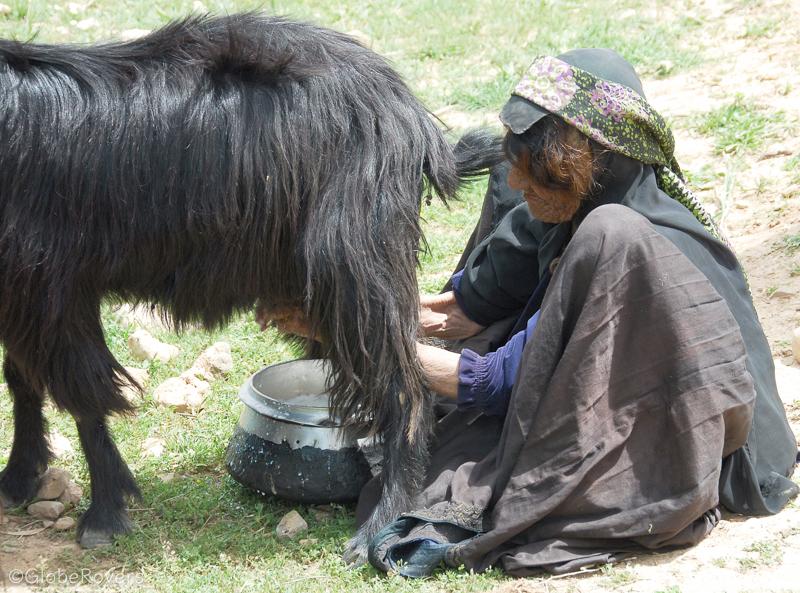
Almost all of them speak a Western Turkic (Oghuz) language known as the Qashqai language, which they call “Turki”, as well as Persian, or Farsi, the national language of Iran.
The majority of Qashqai people were originally nomadic pastoralists and only some remain so today as families are increasingly settling down in the towns and villages. The trend towards settlement has been increasing markedly since the 1960s under government pressure and encouragement, which has built housing for those willing to settle. The majority have now become partially or wholly sedentary.
The traditional nomadic Qashqai travelled with their flocks twice yearly between the summer highland pastures north of Shiraz and the winter pastures on lower (and warmer) lands near the Persian Gulf, to the southwest of Shiraz.
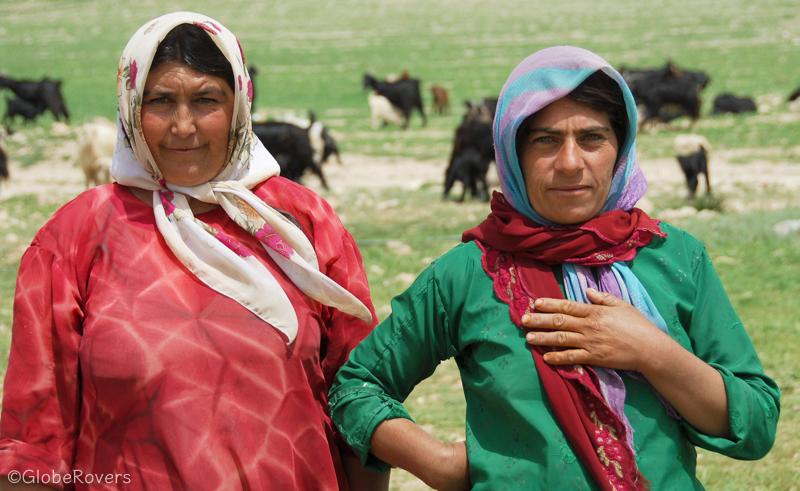
The Qashqai could not imagine a life without their herds, which are fundamental for their survival. They use the goats to provide milk, cheese and meat for their daily needs but also sell some of their animals at the market of Shiraz for money to buy any necessary goods which the goats and sheep can’t produce.
The traditional nomadic Qashqai people live in tents made of goats’ hair and almost entirely live off their sheep and goats, and even today they frequently move their herds of sheep and goats to fresh pastures.
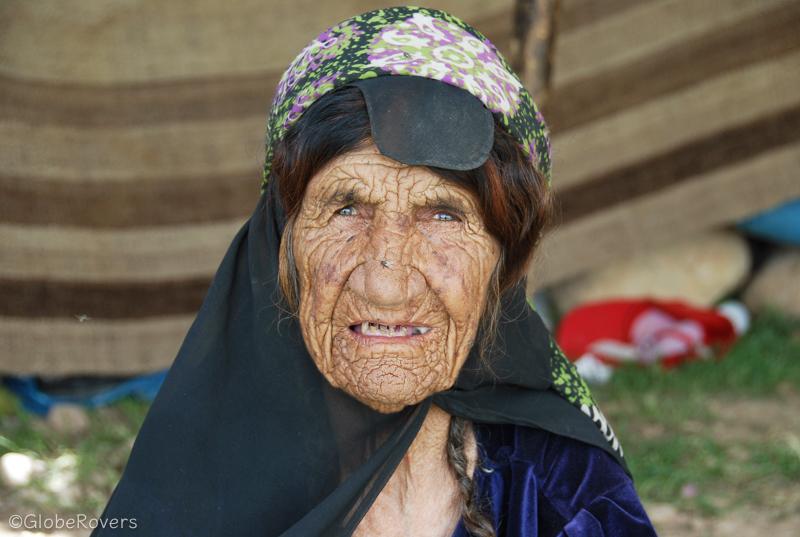
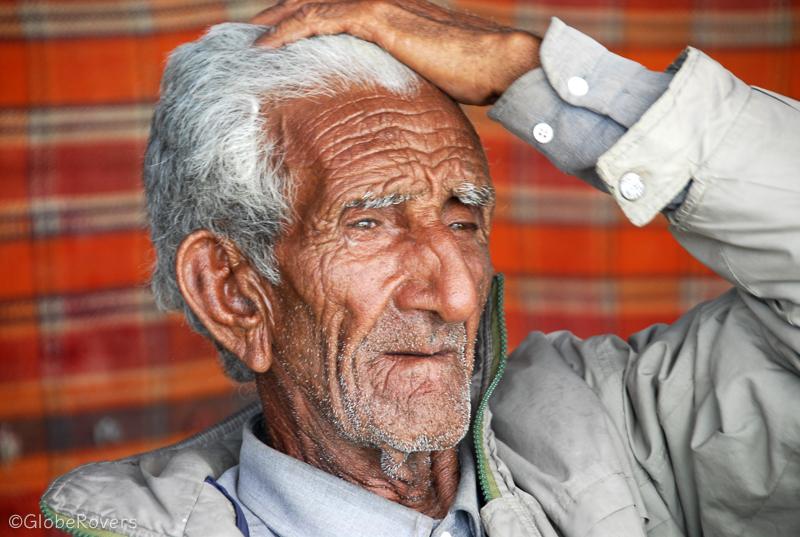
MEETING THE QASHQAI
The Qashqai people are increasingly giving up their nomadic lifestyle to settle in the towns and villages of southern Iran. A few things to consider if you plan to meet them:
- Ask taxi drivers in Shiraz until you find someone who speaks English and knows where to find the nomadic Qashqai people.
- Buy a few items of food as gifts from Shiraz before heading south. They will truly appreciate it.
- They are very friendly and welcoming, in particular if you bring along some much-needed food.
- Ask before taking photos. Generally they are more than happy to be photographed.
- You likely will be offered homemade food such as bread, cheese and yoghurt. Accept with a smile and enjoy.
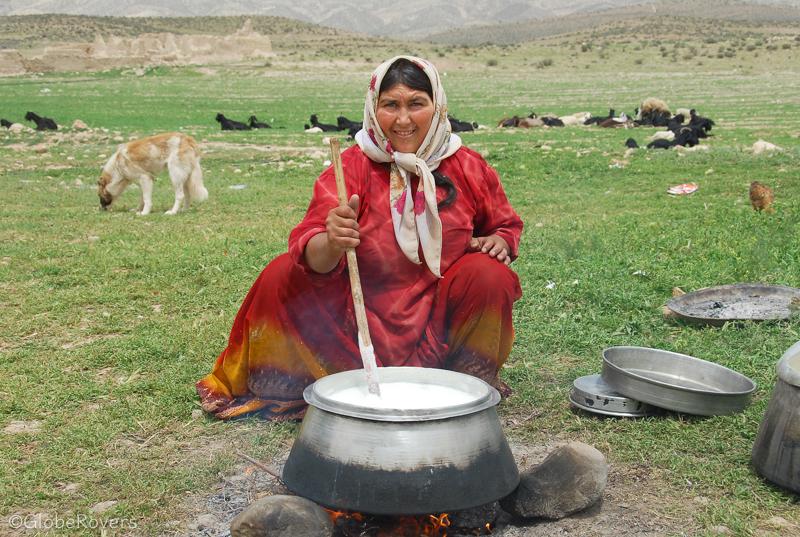
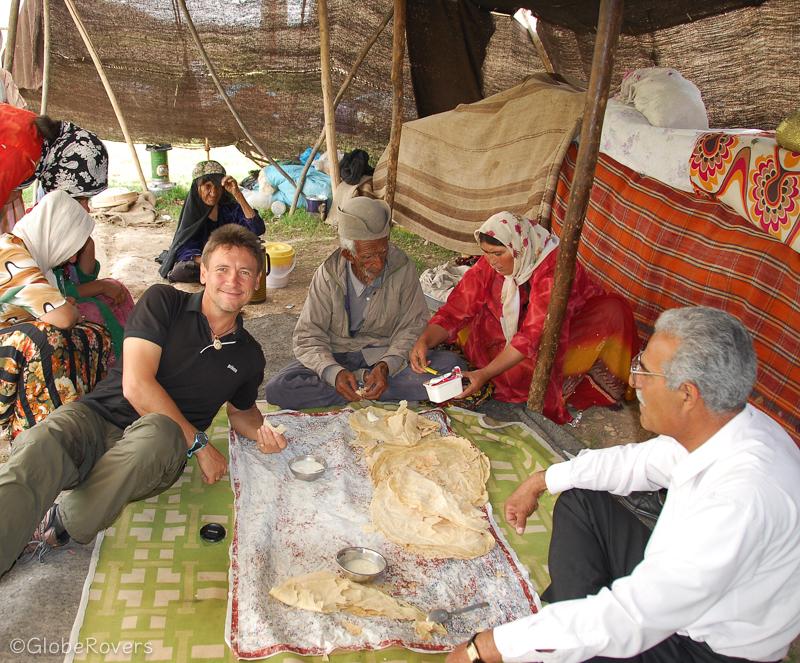
The Lost City of Persepolis
About 60 km northeast of Shiraz is the ancient tombs of Naqsh-e Rustam and the lost city of Persepolis.
The First Persian Empire, also known as the Achaemenid Empire, lasted from about 550 to 330 BC and was founded by Cyrus the Great (559–530 BC). The ancient capital city of Cyrus named “Pasargadae” which I did not visit, is located another 80 km northeast of Persepolis. The tomb of Cyrus can also be seen here in Pasargadae.
The ancient tombs of Naqsh-e-Rostam, lie about 12 km before reaching Persepolis. At Naqsh-e-Rostam are four rock-cut tombs dating back to the early centuries AD. These monumental burial chambers were constructed to honour prominent rulers of the Achaemenid Empire, the dominant power in Western Asia before Alexander the Great conquered much of their territory in the late 4th century BC. Archaeologists believe that Darius I, Xerxes I, Artaxerxes II Mnemon, and Darius II are buried in the tombs, although there isn’t direct evidence confirming this. Each tomb consists of a single chamber carved out of the mountainside. The entrance leads up a flight of steps flanked by guards depicted in relief sculpture.
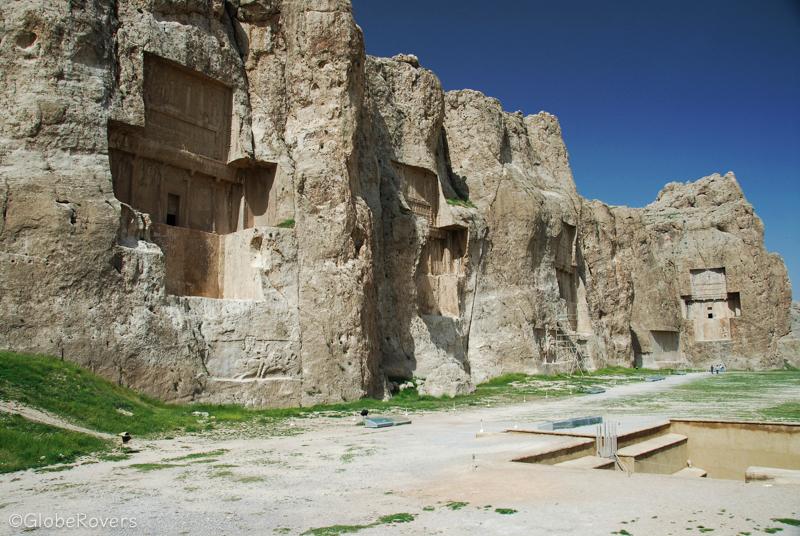
Naqsh-e Rostam’s artwork portrays scenes from court life, military campaigns, and mythical creatures, showcasing influences from both Near Eastern and Greek cultures. Some experts speculate that Persepolis served as the ceremonial capital, while Naqsh-e Rostam functioned as the imperial necropolis.
Since being listed as a UNESCO World Heritage Site in 2006, efforts have been made to preserve and protect the tombs. Visitors today marvel at the intricate bas-reliefs, friezes, and inscriptions, gaining insight into the cultural heritage of pre-Islamic Persia. The site stands testament to the rich legacy of the Achaemenids, leaving a lasting impression upon those fortunate enough to visit Naqsh-e Rostam.
Persepolis (old-Persian: Pārśapura) was the ceremonial capital of the Achaemenid Empire (ca. 550–330 BC)
From the Naqsh-e Rostam tombs the road goes south to the ancient ruins of Persepolis. During the time of the Achaemenid Empire, the city of Persepolis was their “ceremonial capital”. Some of the earliest remains of the city date back to 515 BC. Historians found that Cyrus is the guy who chose the site while it was really Darius the Great (550 BC to 486 BC and the third king of the Persian Achaemenid Empire) who should get the credit for building most of the terraces and the great palaces of Persepolis. Whatever old Darius could not complete, his willing son, King Xerxes the Great, completed for his dad. Construction here continued until the downfall of the Achaemenid Empire.
Then came Alexander III, also referred to as Alexander the Great. Alex was a king of Macedon, a state in northern ancient Greece, and he and his forces invaded Persia in the year 330 BC. They captured the city before its treasury could be looted but then later allowed his men to ransack the precious city.
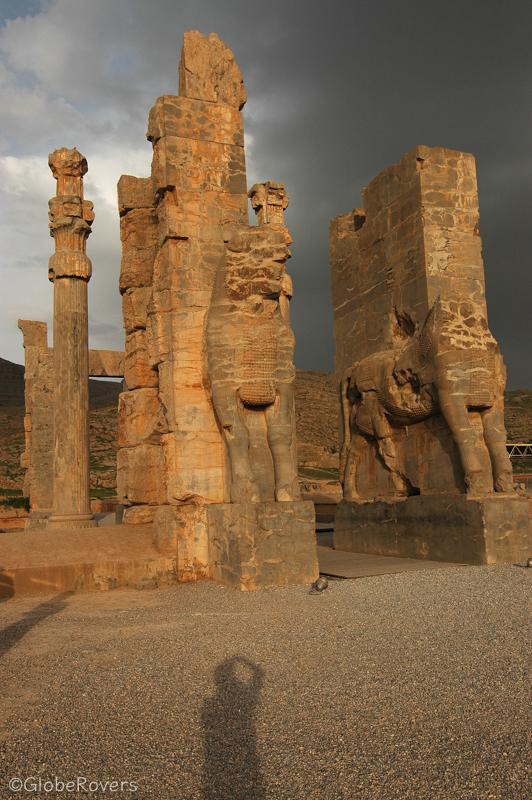
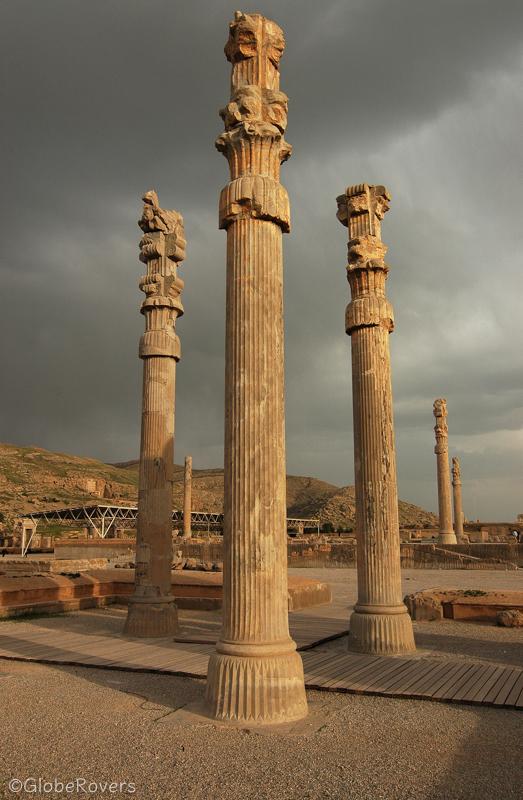

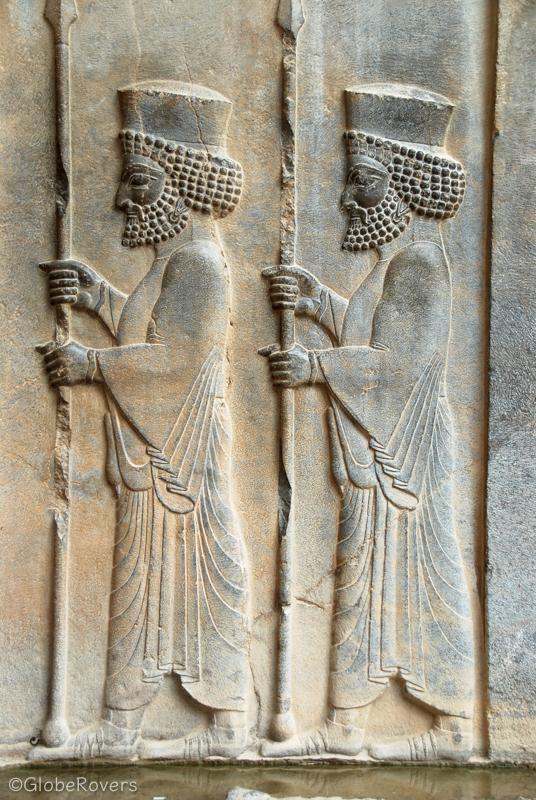
Much of Persepolis was then destroyed by a fire that broke out in the Palace of Xerxes, and spread to the rest of the city. The forces of Alexander the Great are to blame though it is not exactly clear if the fire was set intentionally or if it was by accident. Today we don’t have much left to look at, but with some wild imagination, we can imagine the splendour of the city.
The impressive “Gate of All Nations” refers to subjects of the empire and consisted of a huge hall measured about 25 m in length, with four columns and its entrance (Gate of Xerxes) on the western wall. King Xerxes the Great (519–465 BC), the fourth King of Persia, ordered the construction and had his name written all over the entrances—hence the name “Gate of Xerxes”, as so thy king named it!
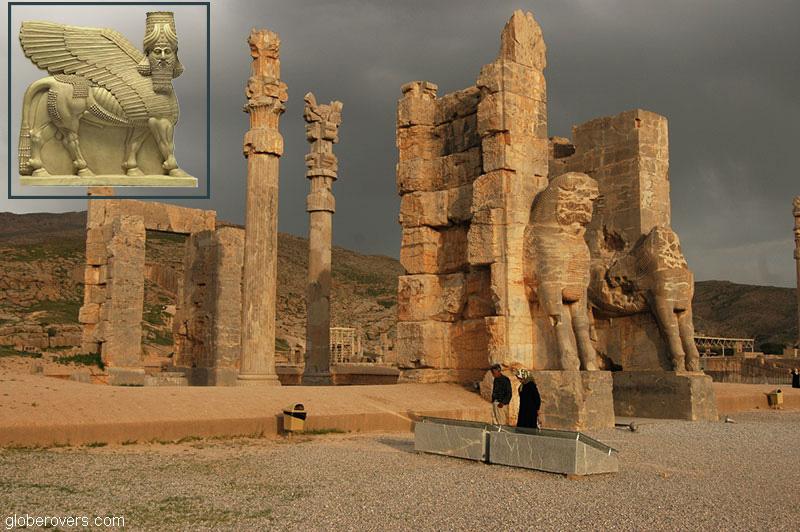
A pair of Lamassus bulls (a protective deity) with the heads of bearded men guard the gates, although long ago they sadly lost their heads to looters.
The Throne Hall or the Imperial Army’s Hall of Honour (also descriptively referred to as the “Hundred-Columns Palace”) measures 70 x 70 square metres making it the second largest building of the Terrace. King Xerxes the Great started the construction but his son, Artaxerxes I, completed it by the end of the fifth century BC.
The Tomb of Artaxerxes II who ruled from 404 BC until his death in 358 BC is also located at Persepolis. He apparently proudly killed his own brother ‘Cyrus the Younger’ and executed several other people whom he didn’t like. He is reported to have had a number of wives and also married several of his own daughters.

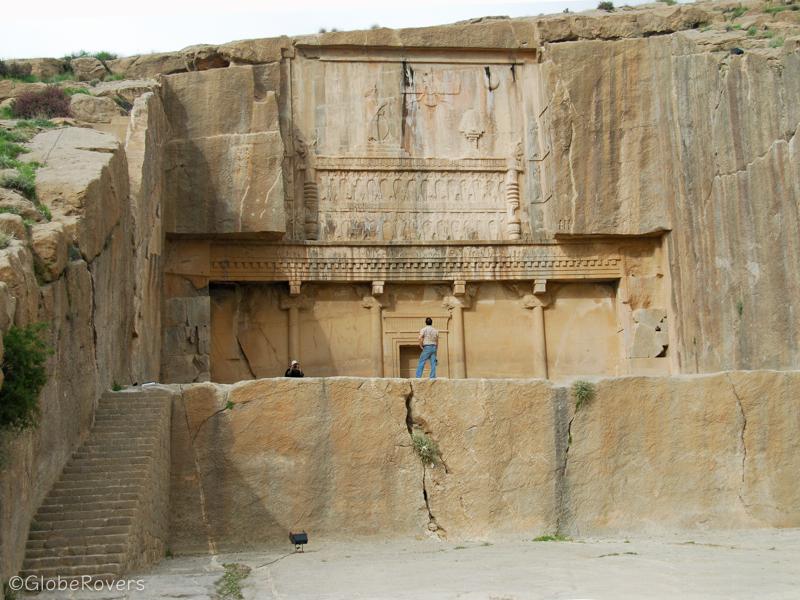
Cuneiform inscriptions are clearly visible on window frames at the Palace of Darius I (also called “Tachara Palace” or “Mirror Hall”) which was the exclusive palace of Darius I although only a small portion of the palace was finished under his 36-year rule (522 BC to 486 BC).
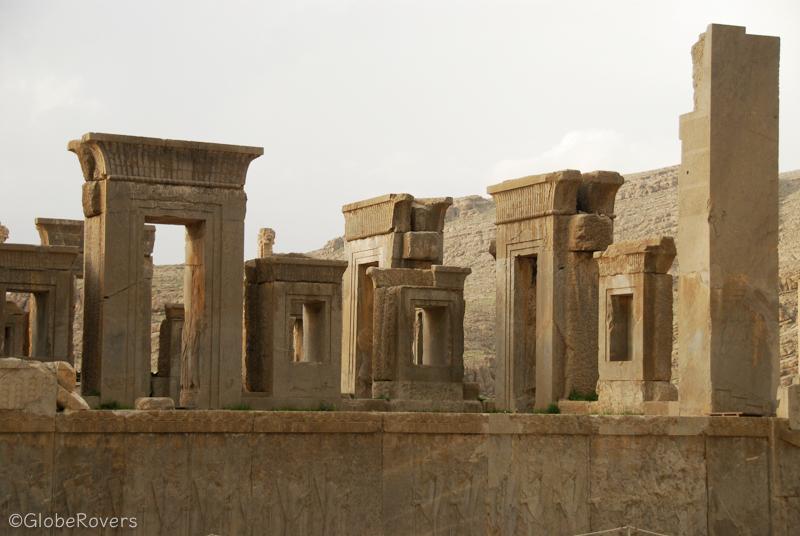
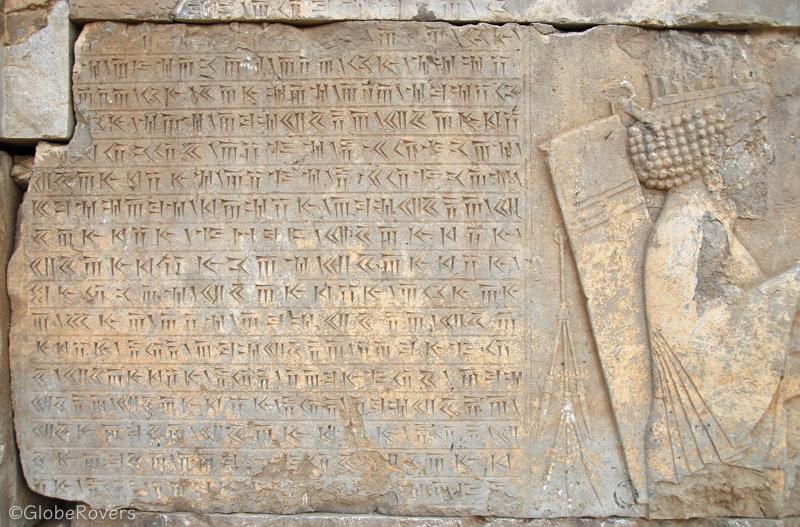
His son and successor, Xerxes I, completed the palace after his dad died and called the house a Taçara which means ‘winter palace’. This is one of the few places that the fire by Alexander the Great did not destroy.
Darius I built Apadana Palace, described as the greatest palace at Persepolis. Construction started in 515 BC but was only completed 30 years later by Xerxes I.
Oak and cedar beams which connected the seventy-two columns were brought in all the way from the hills of Lebanon.
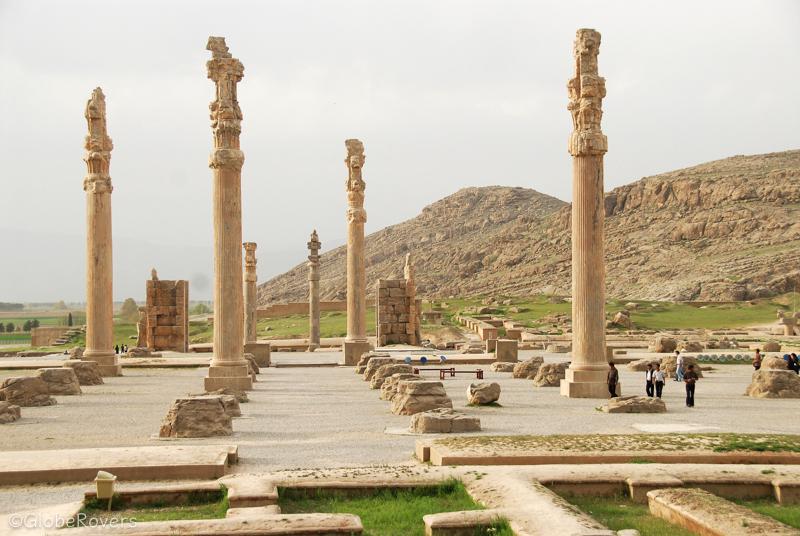
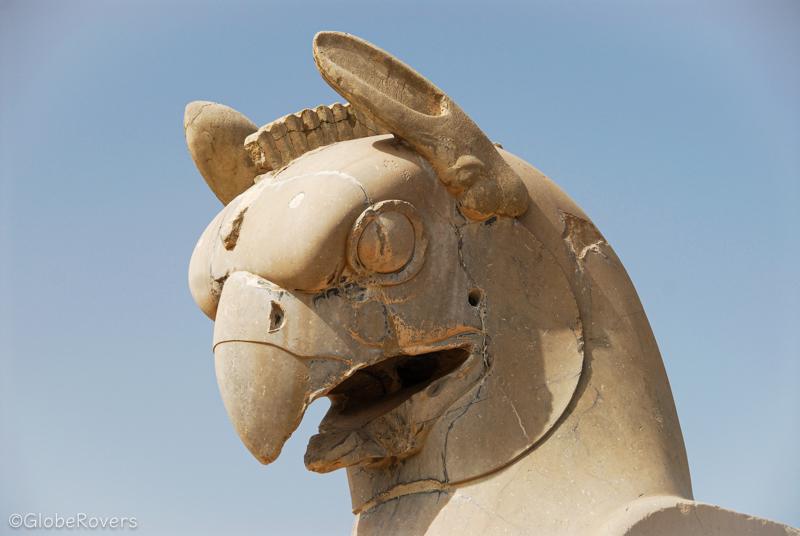
The Mud City of Yazd
From Persepolis continue in a northeastern direction to the ancient city of Cyrus (Pasargadae) and then continue to the “modern” city of Yazd which is another highlight of Iran. Located in central Iran (almost 400 km northeast of Persepolis and 625 km south of Tehran), the city of Yazd (pop. of about 500,000) is the capital of Yazd Province. Made from sun-dried mud bricks, the oldest part of the city is one of the oldest human settlements on Earth.
The city was originally situated at an oasis roughly where the Dasht-e Kavir and the Dasht-e Lut deserts meet. The backdrop to Yazd is the impressive Shir Kuh, the tallest mountain in the region at 4,075 m. Nearby Kharanaq and Chak Chak are ancient mud-brick villages believed to be more than 1,000 years old. Chak Chak is the most sacred of the mountain shrines of Zoroastrianism in Iran.
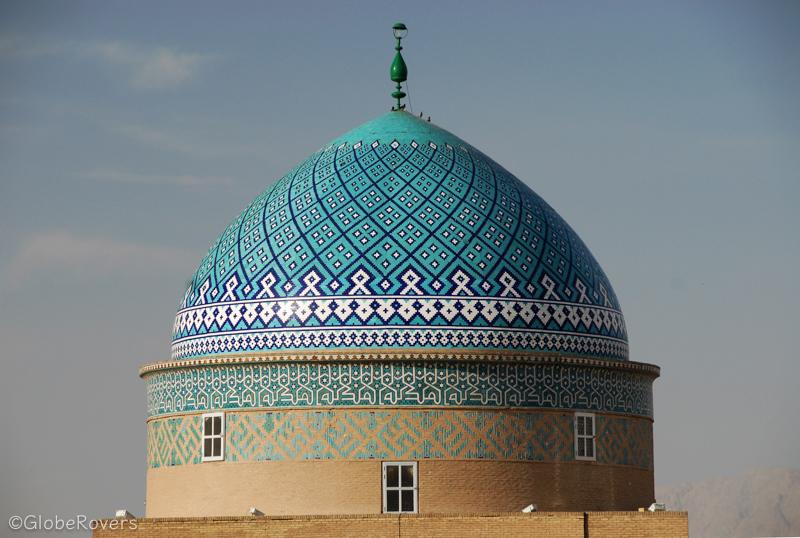
Among the most impressive attractions of Yazd is the 15th-century domed Bogheh-ye Seyed Roknaddin (Mausoleum of Seyed Roknaddin), with its fine blue-tiled dome which was also called “Alexander the Great’s Prison” as it has a dungeon. However, historians believe it was neither built by Alexander nor was it a prison. In fact, it was an old school.
The 12th-century Jameh Mosque of Yazd was rebuilt between 1324 and 1365 and proudly sports two 48 m high minarets and an impressive mosaic-decorated dome.

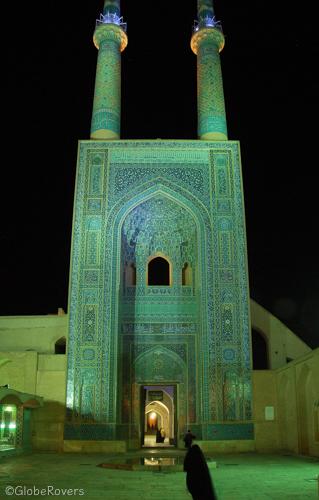
The colourful Amir Chakhmagh Mosque is freshly lit up at night. It was built in the 14th century by Amir Jalaledin Chakhmagh, one of the Shahrokh Teymuri’s commanders and the governor of Yazd, with the inspiration of his wife, Seti Fatimeh. Amir Jalaledin Chakhmagh’s mausoleum rests beneath the square facing the northern façade of the structure. The mosque represents a unique fusion of traditional Islamic architectural elements and Timurid design.
Timurid is a style used primarily for architecture and decoration originating from Central Asian Turco-Mongol communities under Mongol rule, specifically during the reign of Tamerlane (Timurlane). Characteristics include the use of geometrical shapes and patterns; calligraphic inscriptions; pointed arches; muqarnas (stalactite-like ornaments); and iwans (vaulted halls). These designs typically feature vibrant colours and complex details which, at close inspection, are obvious at the Amir Chakhmagh Mosque.
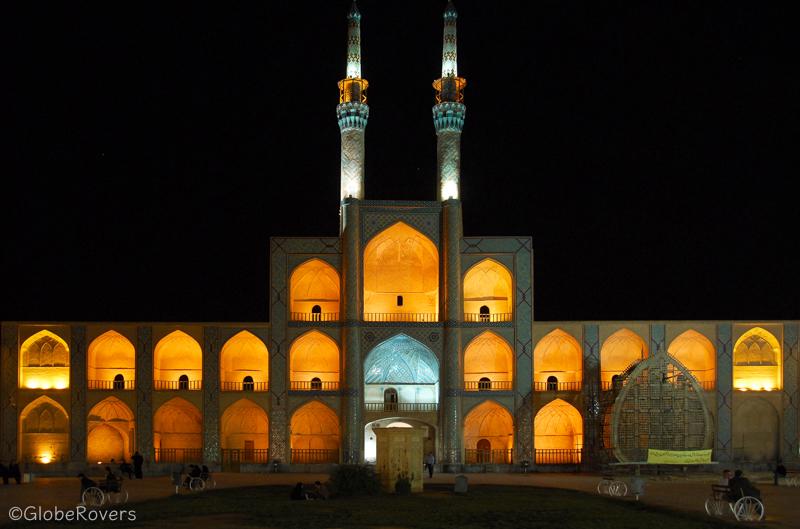
Being surrounded by very hot and dry deserts, Yazd is known for its “badgirs”, which are wind towers or windcatchers that create natural ventilation in traditional Persian-influenced architecture. They function by creating a downward airflow due to direct wind entry followed by an upward airflow as a result of the temperature gradient.
Yazd also has several old traditional houses such as the 150-year-old Khan-e Lari which is a Qajar-era traditional house complete with badgirs, traditional doors, stained-glass windows, elegant archways and even alcoves (vaults).
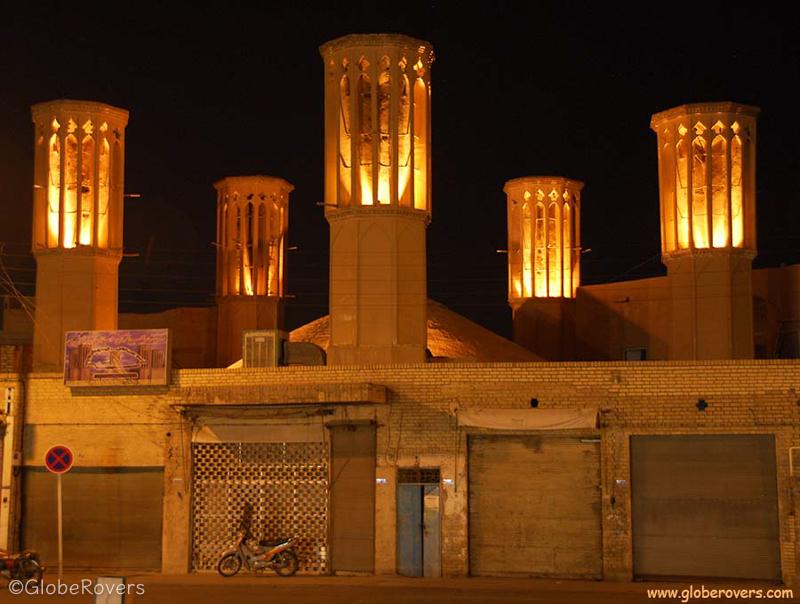
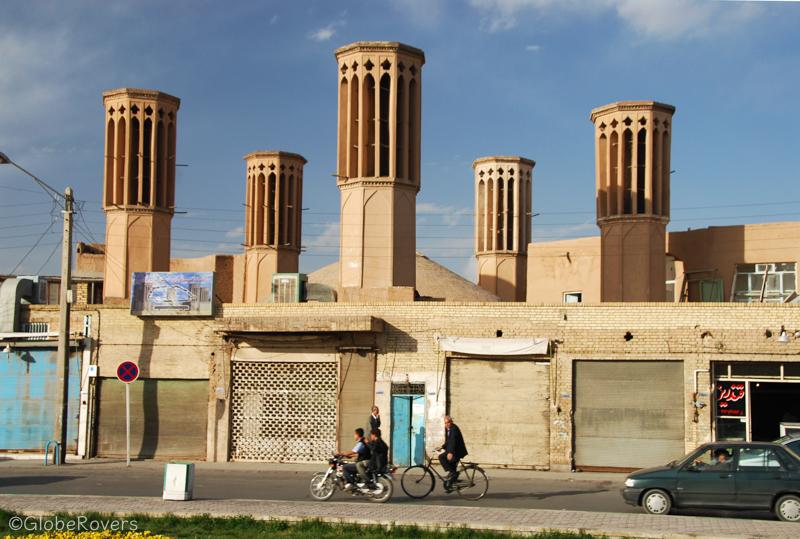
Stay at the lovely Silk Road Hotel which is a beautifully restored traditional Persian house located in the historical centre of Yazd. It is just 100 metres away from the 13th-century Jameh Mosque with its splendid minarets.
The hotel offers 9 comfortable rooms: 1 single, 3 twins, 2 doubles and 3 triples. All of them include a bathroom with a hot shower, western toilet, remote-controlled central heating and air conditioning, fridge and free WiFi. The hotel also has a restaurant that serves great Persian food.
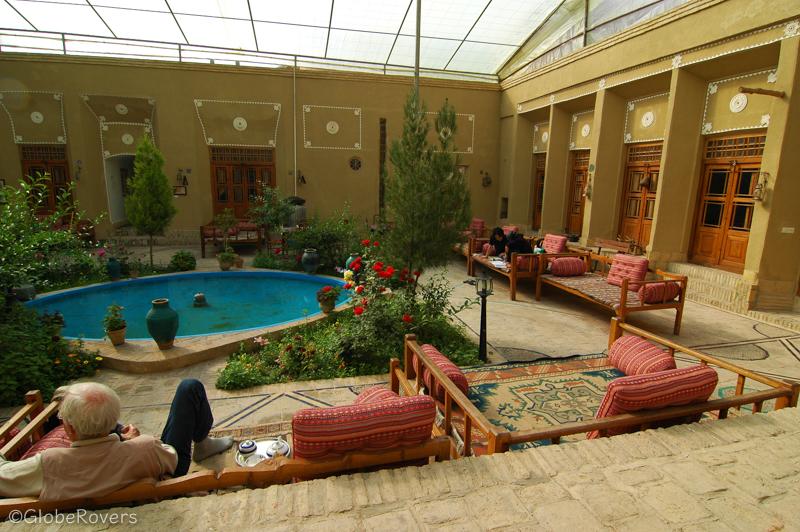
The Towers of Silence
A short distance outside Yazd is the dakhma or dema (“Towers of Silence”) which is historically a centre of Zoroastrianism.
The raised structure was used by the Zoroastrians for exposure of their dead, particularly to scavenging birds. In the Zoroastrian tradition, once someone has died, their body can immediately be contaminated by demons and made impure. To prevent this infiltration, Zoroastrians purified the dead body by exposing it to the elements and local fowl on top of these flat-topped towers.
Orthodox Zoroastrians continued to maintain their dakhma until the 1970s when they were shut down by law.
Since then they either cremate or bury the dead in graves lined with rocks, and plastered with cement to prevent direct contact with the earth.

Kharanaq & Chak-Chak
About 76 km northeast of Yazd is the ancient mud-brick village of Kharanaq. Some parts of the village are believed to be more than a thousand years old but the site has been occupied by humans for more than four thousand years. The city is surrounded by mountains on one side and deserts on the other.
Many buildings in Kharanaq are completely collapsed and ramshackle, but among them, the remaining mosque from the Qajar period, a shaking minaret from the 17th century, and the caravanserai of the city have been reconstructed and can be visited.

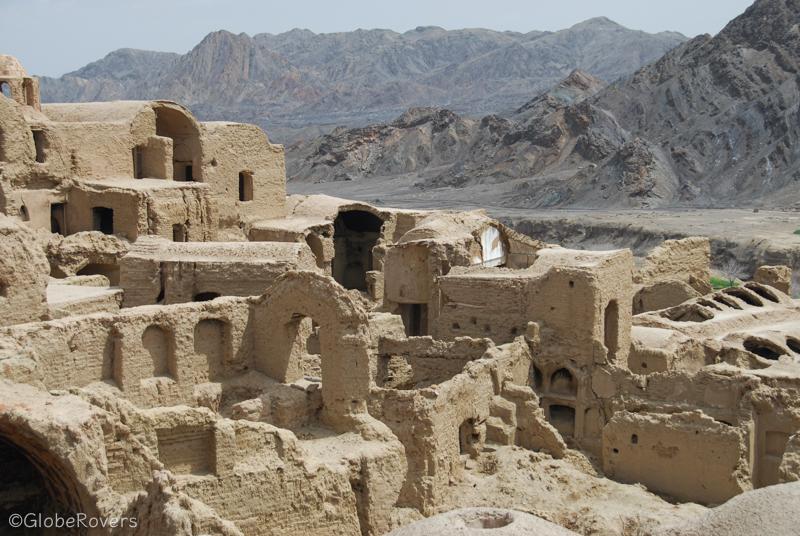
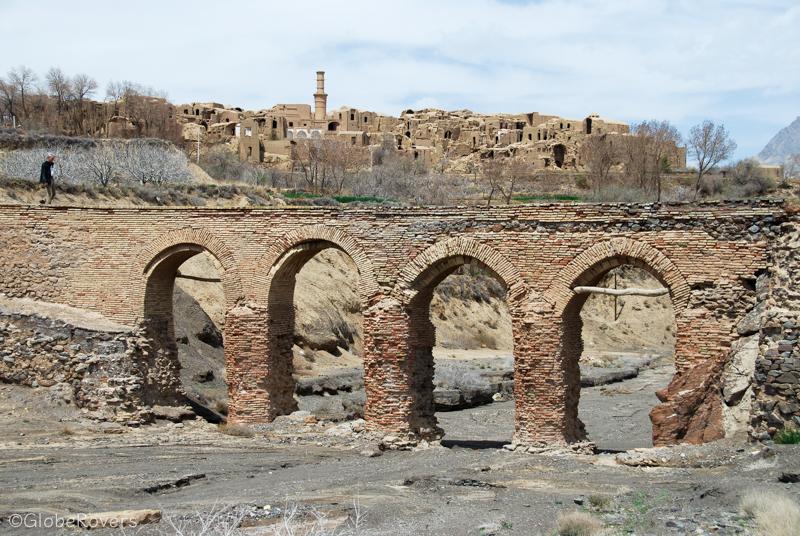
A little north of Kharanaq, nestled in the mountains and surrounded by the desert, is the ancient pilgrimage village of Chak Chak which houses in a cave one of the most sacred mountain shrines of Zoroastrianism, known as the Pir-e-Sabz Fire Temple which dates back to the pre-Islamic period. Chak Chak is revered for its spiritual values by the followers of this ancient Iranian religion.
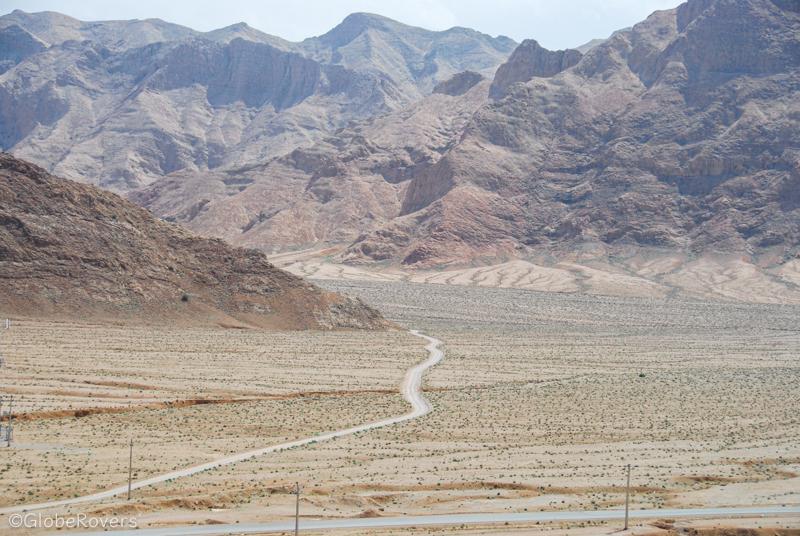
According to history books: “Inside the grotto there is a constant dripping from the roof. Legend has it that Nikbanou, the second daughter of the last pre-Islamic Persian ruler, the Sassanian Emperor Yazdegerd III of Persia, was cornered by the invading Arab army in 640 CE. Fearing capture Nikbanou prayed to Ahura Mazda to protect her from her enemies, and struck her stick into the side of the mountain.” In response, the mountain opened up and Nikbanou disappeared inside. The constant dripping made the stick grow roots and turn into the ancient tree that still stands today. Hence the name Chak Chak means “Drip Drip” in Persian, referring to the constant dripping around the walls and ceiling. Legend has it that these drops are tears of grief that the mountain sheds in remembrance of Nikbanou.
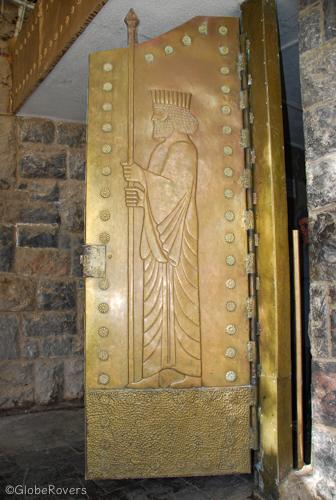
The shrine is a man-made cavern that is protected by two large bronze doors. Inside, the floor is made of marble and the walls have been blackened by the fires that are kept burning at all times. Several pavilions with roofs have been built into the cliffs below the shrine to provide shelter for pilgrims.
From the parking area below the cave, a hiking trail leads to the top of the hill that offers spectacular panoramic views. The hike up takes about 30 minutes if you go fast!
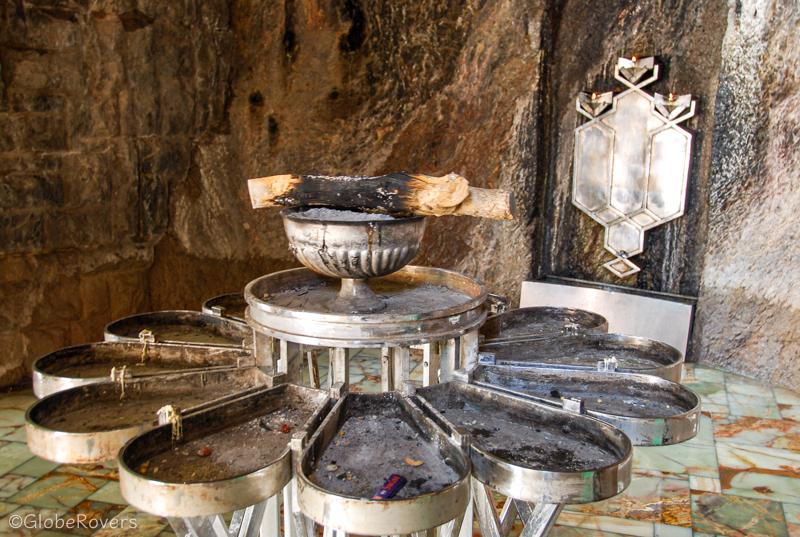
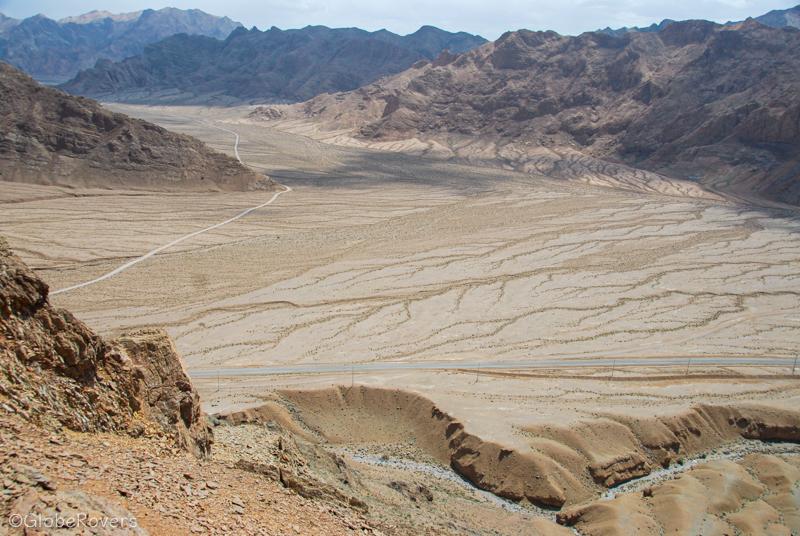
Desert Oasis of Garmeh
A 270 km journey northeast of Yazd into the vast Dashte-Kavir desert ends at the oasis village of Garmeh. If you are trying to find the village on Google Earth, just look for a tiny cluster of date trees next to a small pond of water at the foot of the nearby barren mountain.
Garmeh is truly an oasis village as the only water source of this mud village comes from a spring that flows subterraneous out of the nearby mountains. The history of human settlement around this fountain dates back about 4,000 years, and possibly 7,000 years! During the more recent times (i.e. the past 2,000 years), this settlement was on the main route of the famous Silk Road.

This village is unquestionably rich in history and you get a true sense of its history by just walking around the ancient mud buildings, arches, and alleys. The village is surrounded by date and palm trees and of course the nearby springs with fresh water.
A 60-minute drive to the north enters a vast expanse of salt flats known as the Kavir National Park which has a surface area of about 3,000 square kilometres. This park encompasses large areas of sand dunes interspersed with flat plains covered with crusted salt layers. The area features several seasonal lakes, which support diverse flora and fauna despite extremely high temperatures and low humidity levels. These lakes form part of the Khash Desert, providing refuge for animals adapted to extreme arid environments. Wild camels roaming the landscape remain an integral part of local human settlements and travel routes through these harsh lands. It offers breathtaking scenery created by nature’s persistent forces, crafting an otherworldly environment of unearthly beauty. Take a close-up look at the salt crystals inside the bright turquoise water!
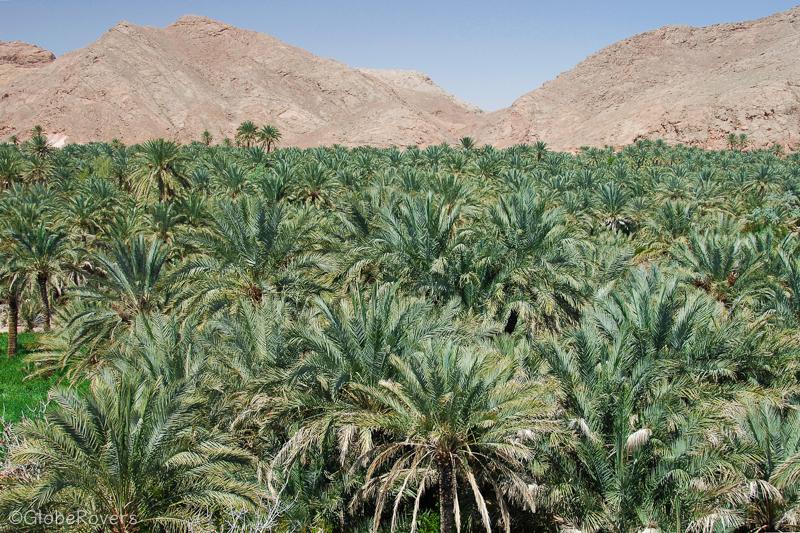
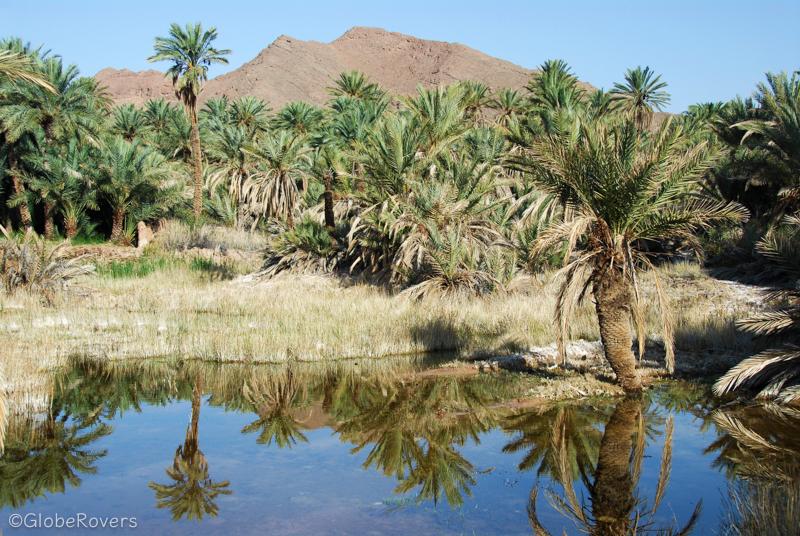
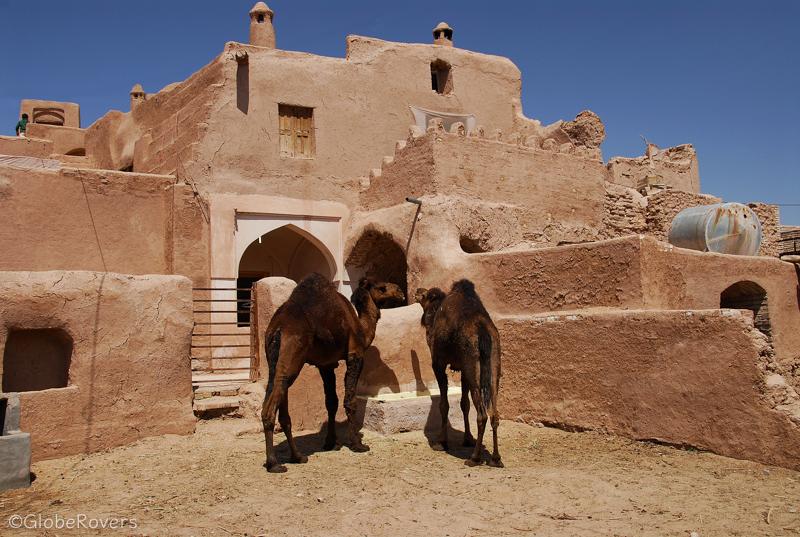
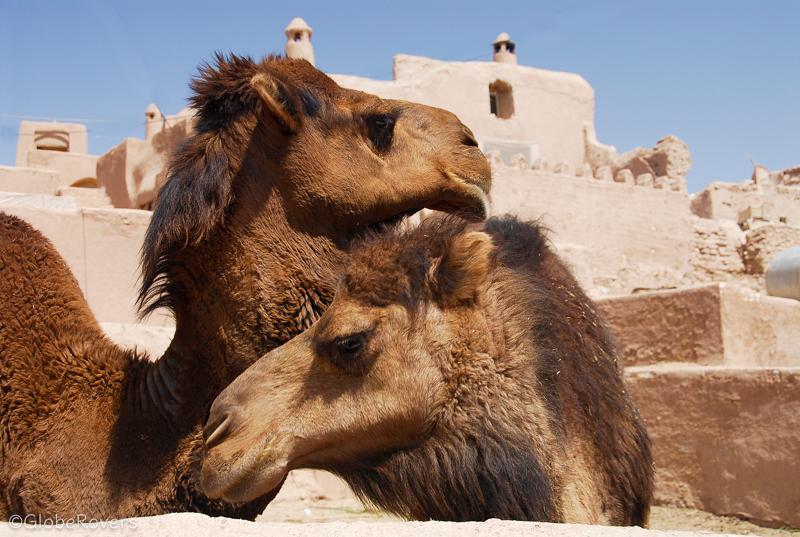
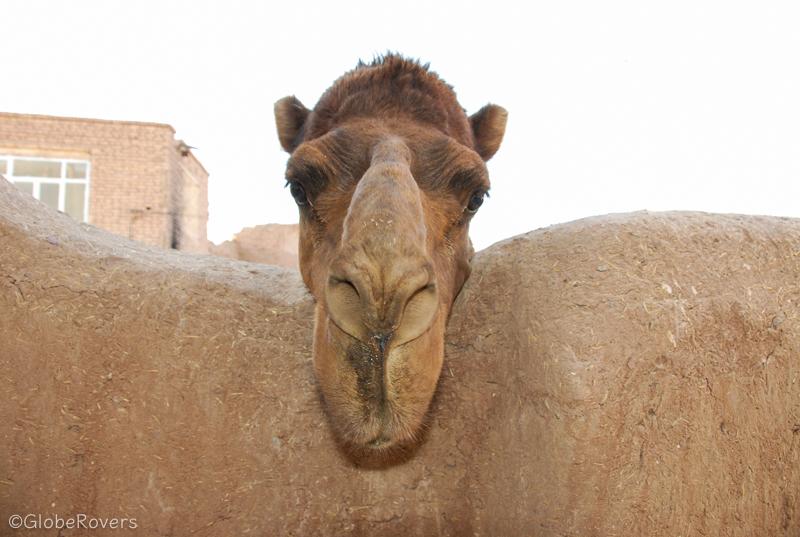
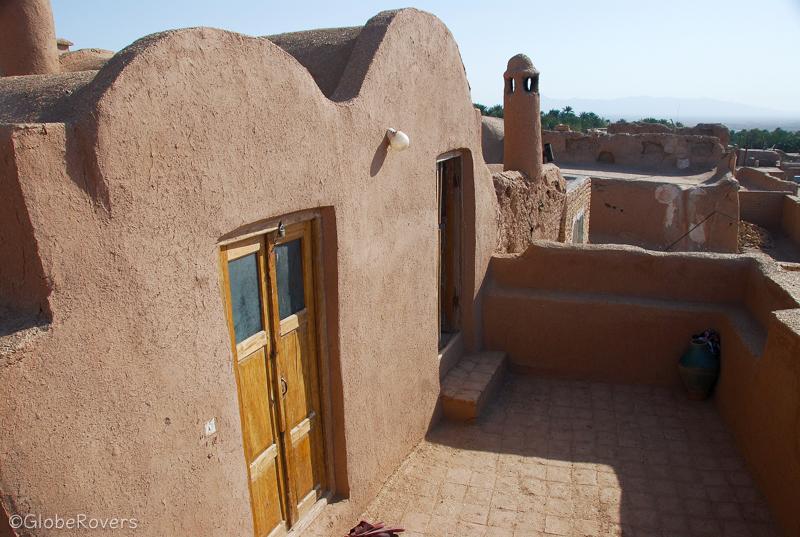
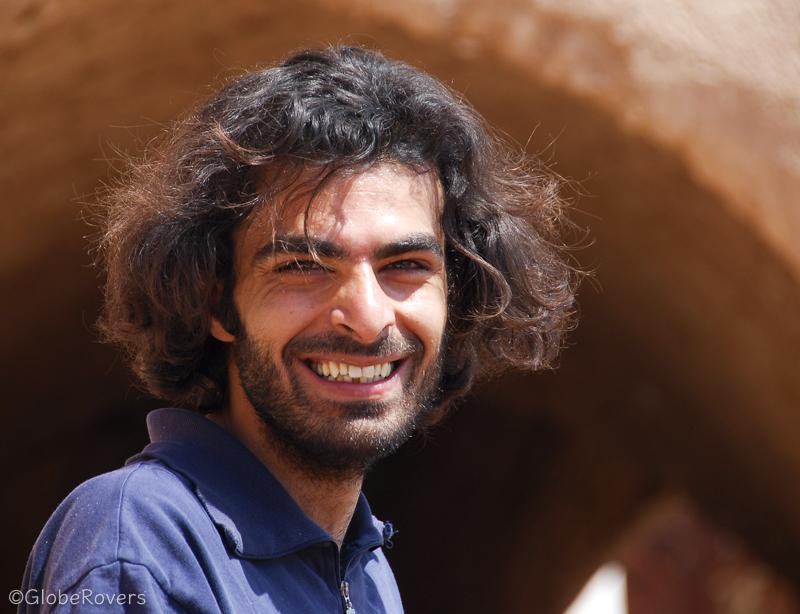
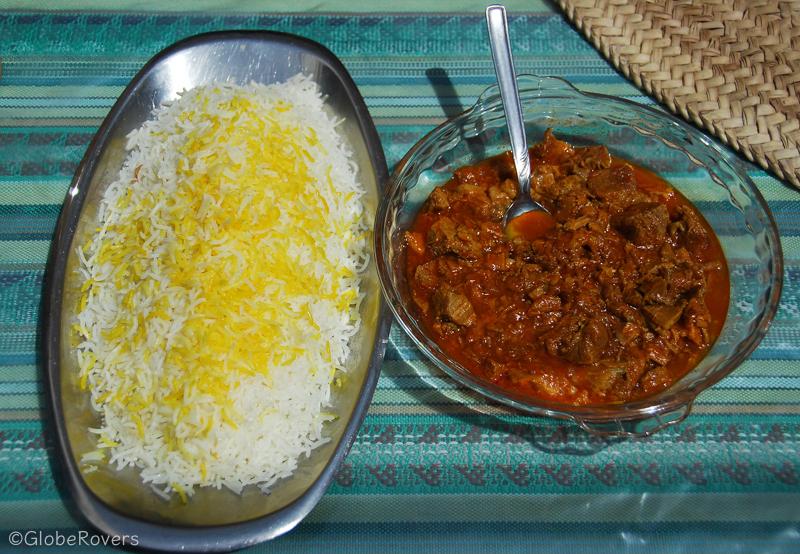

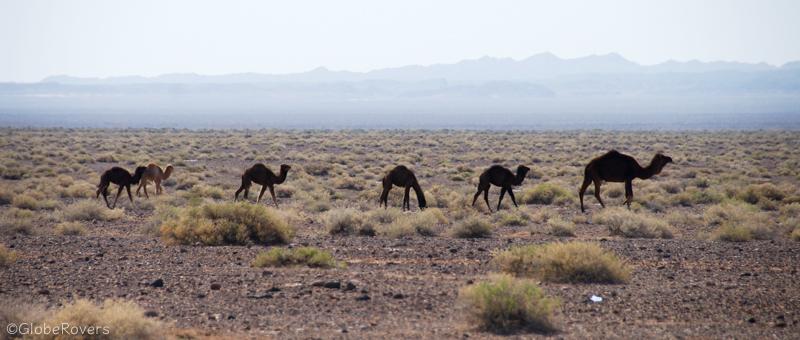
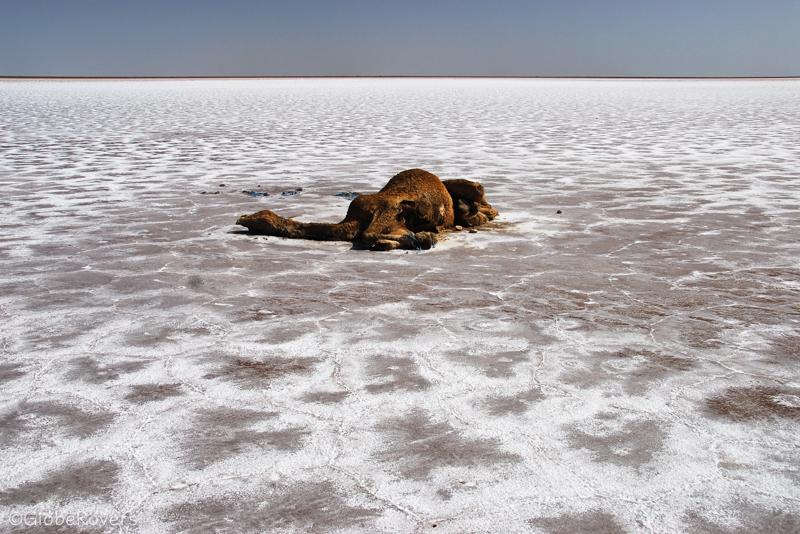

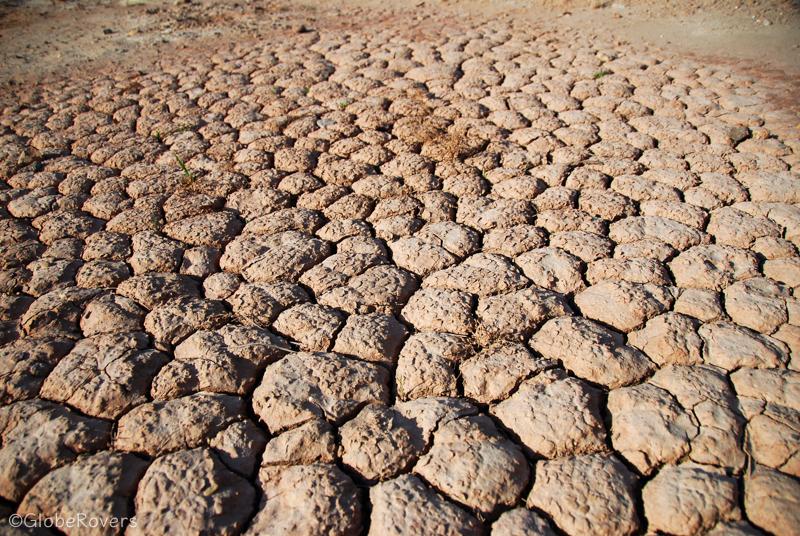
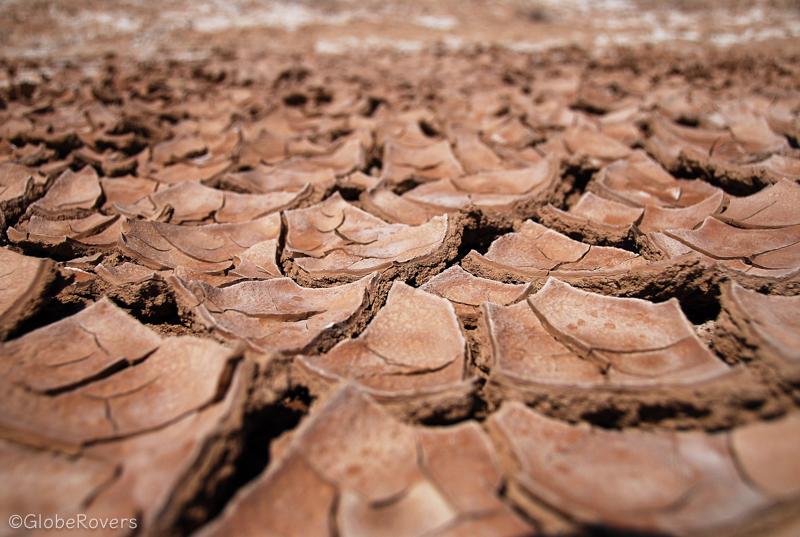
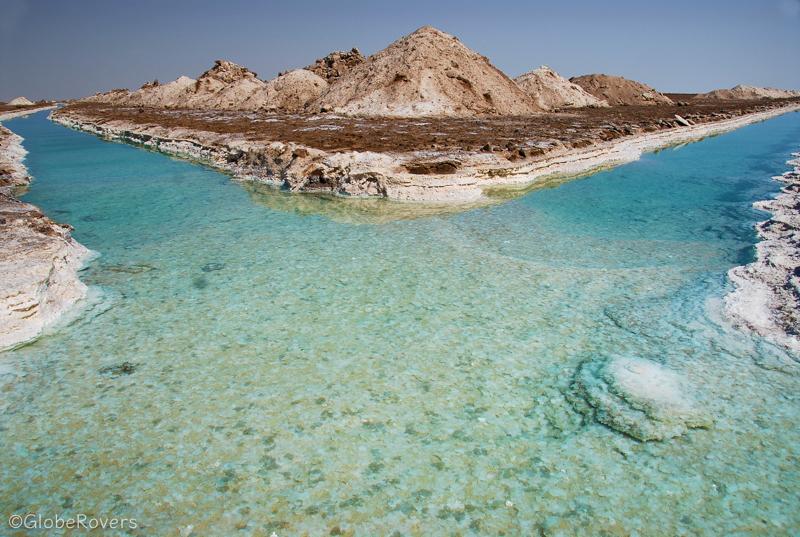
☛ Read more:
All posts of Iran
The Northwestern Region
The Central Region ~ you are here!
The Southern Region
Kashan: A Desert City with a Rich Cultural Heritage

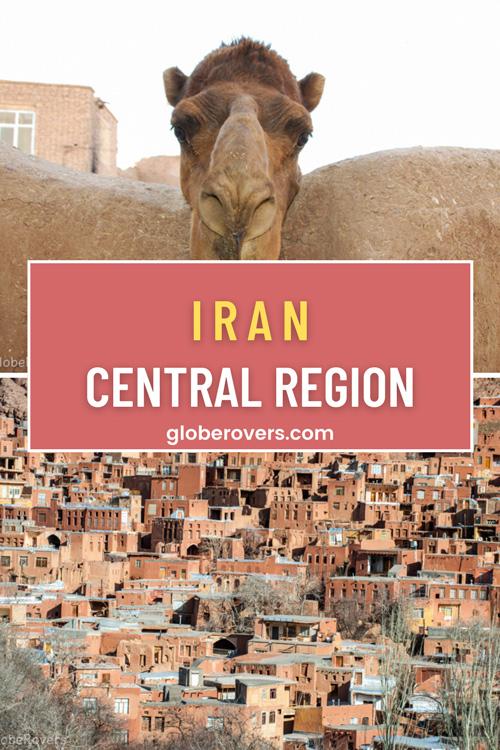

Blog post and photos by Peter who has been travelling almost full-time since 2005 and has been to over 122 countries. He visited several countries, such as Japan, more than 20 times. Peter is Editor-in-Chief and Publisher of GlobeRovers Magazine, an independent travel magazine focused on intrepid destinations.
